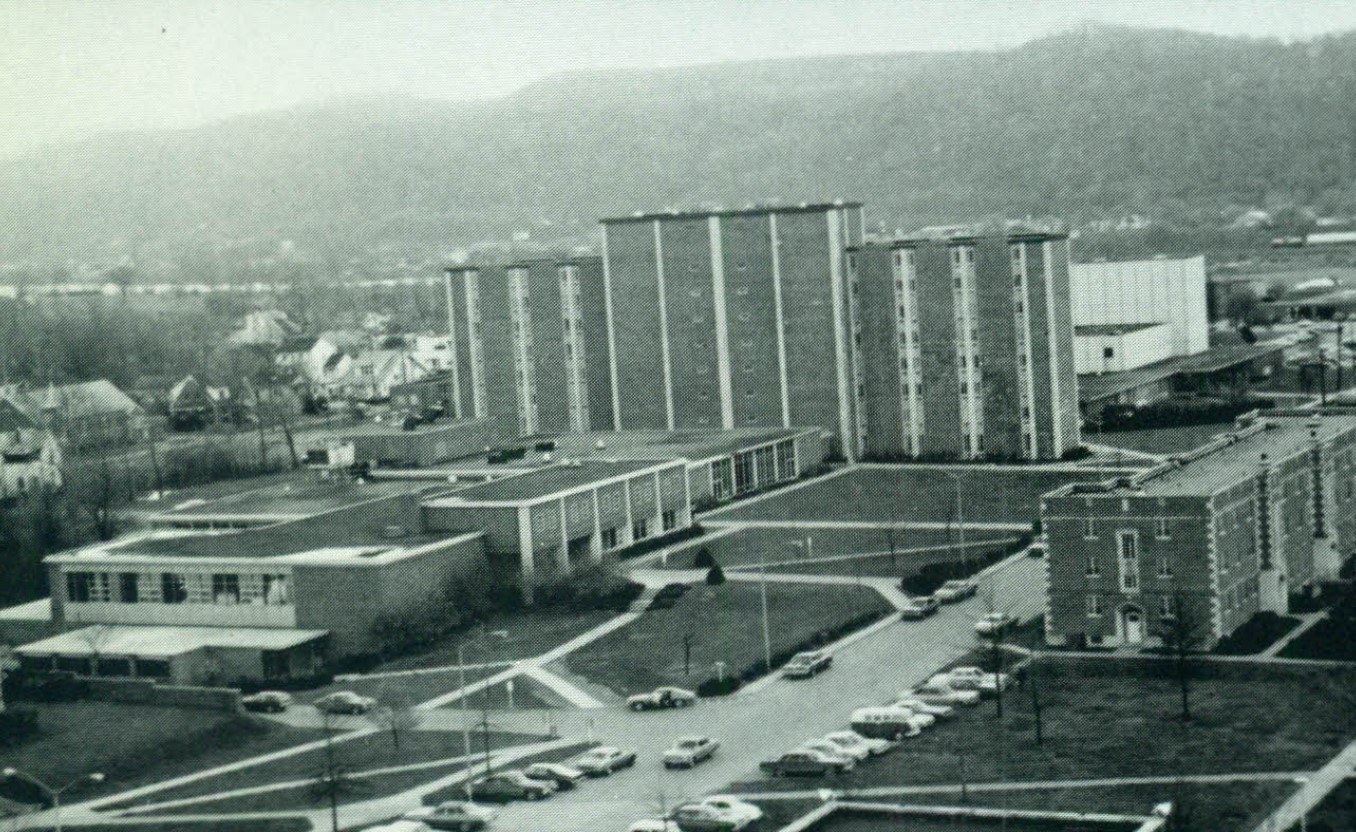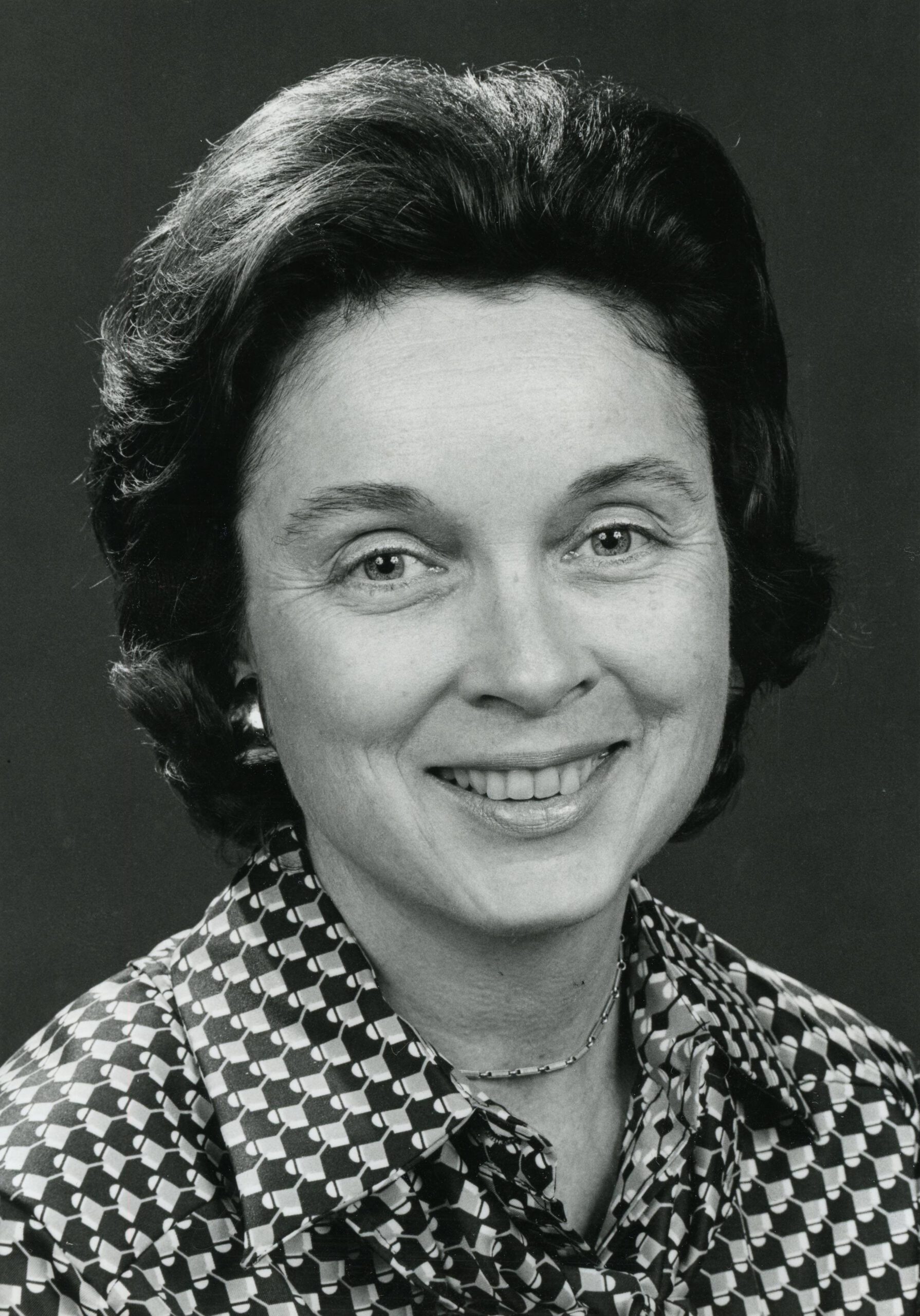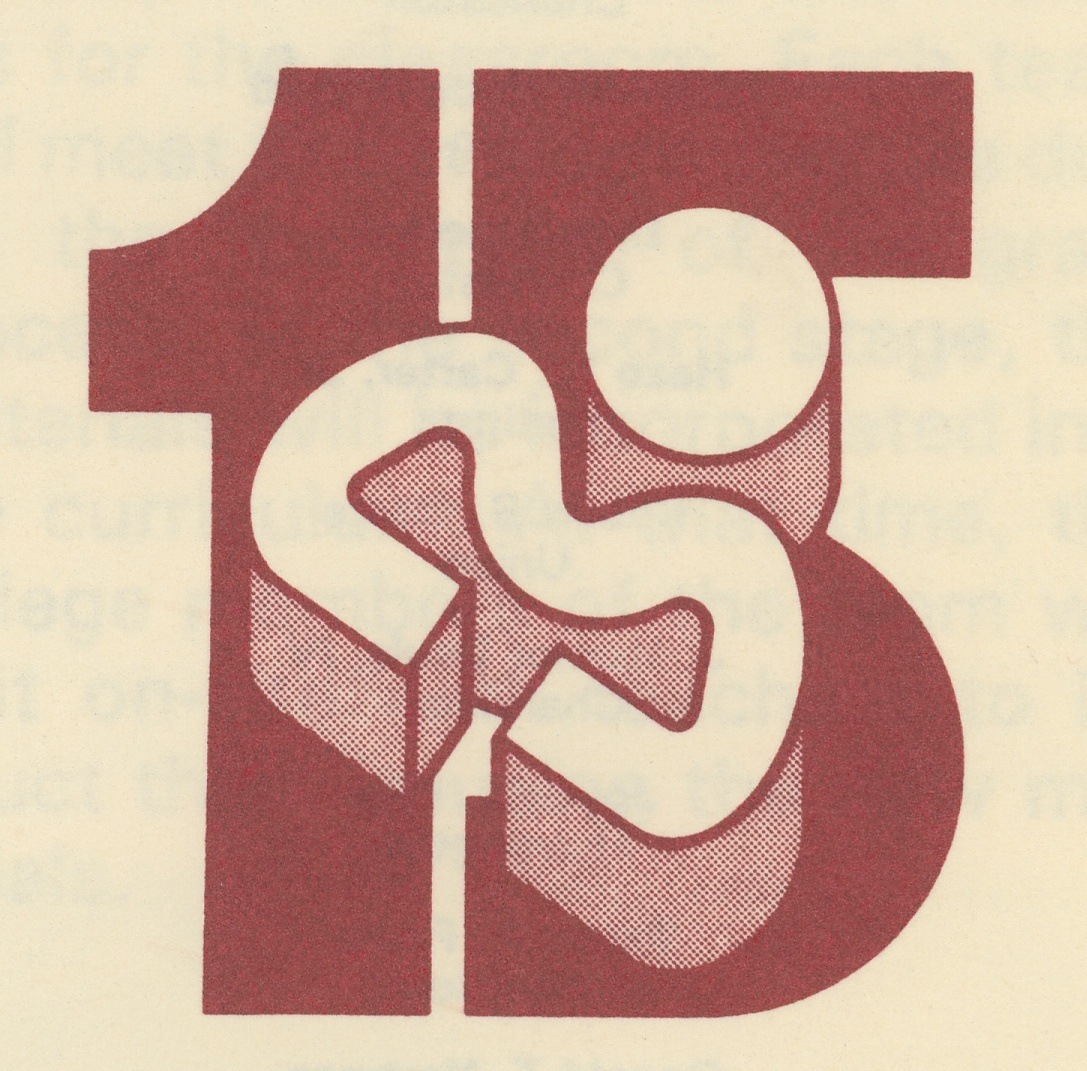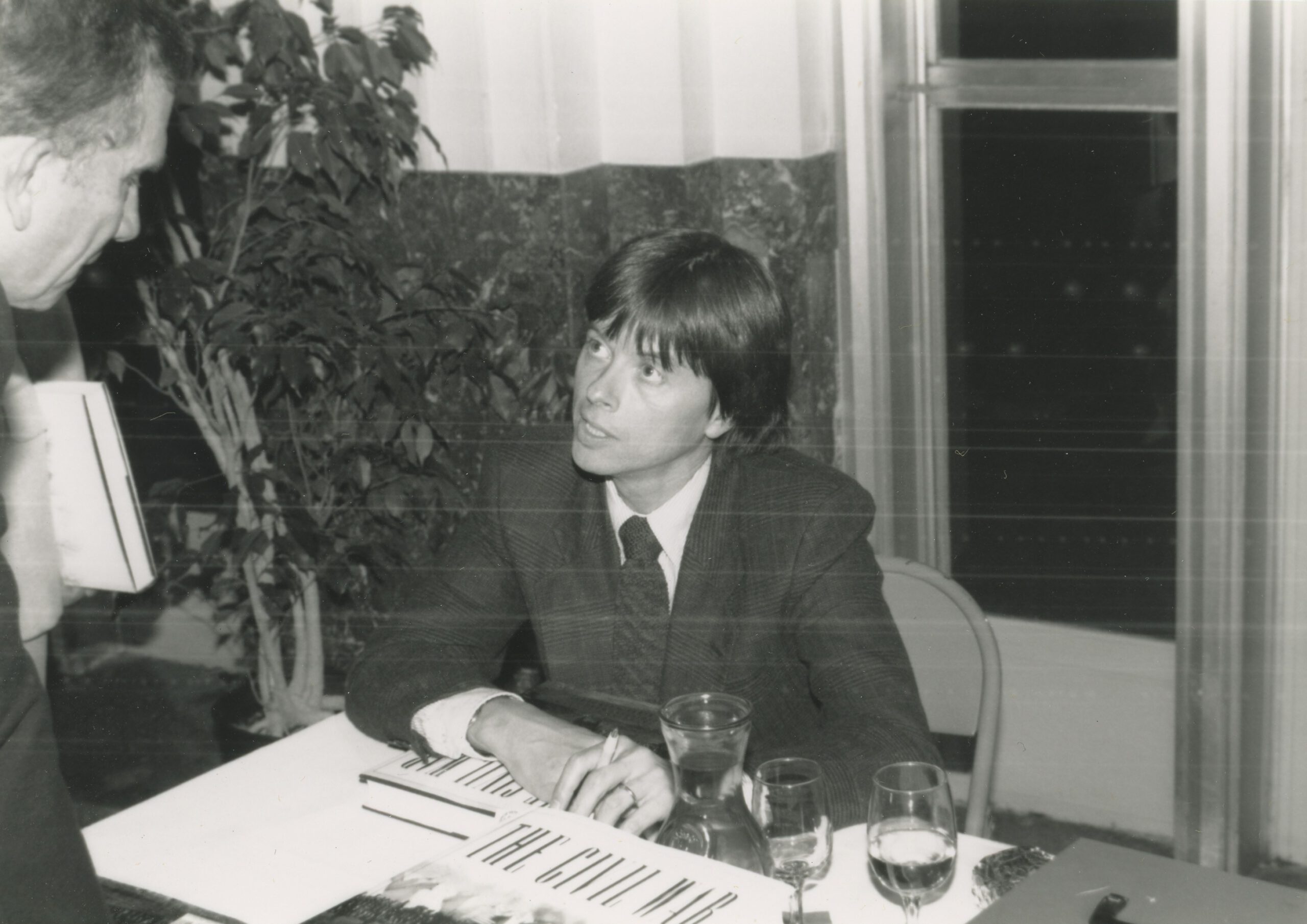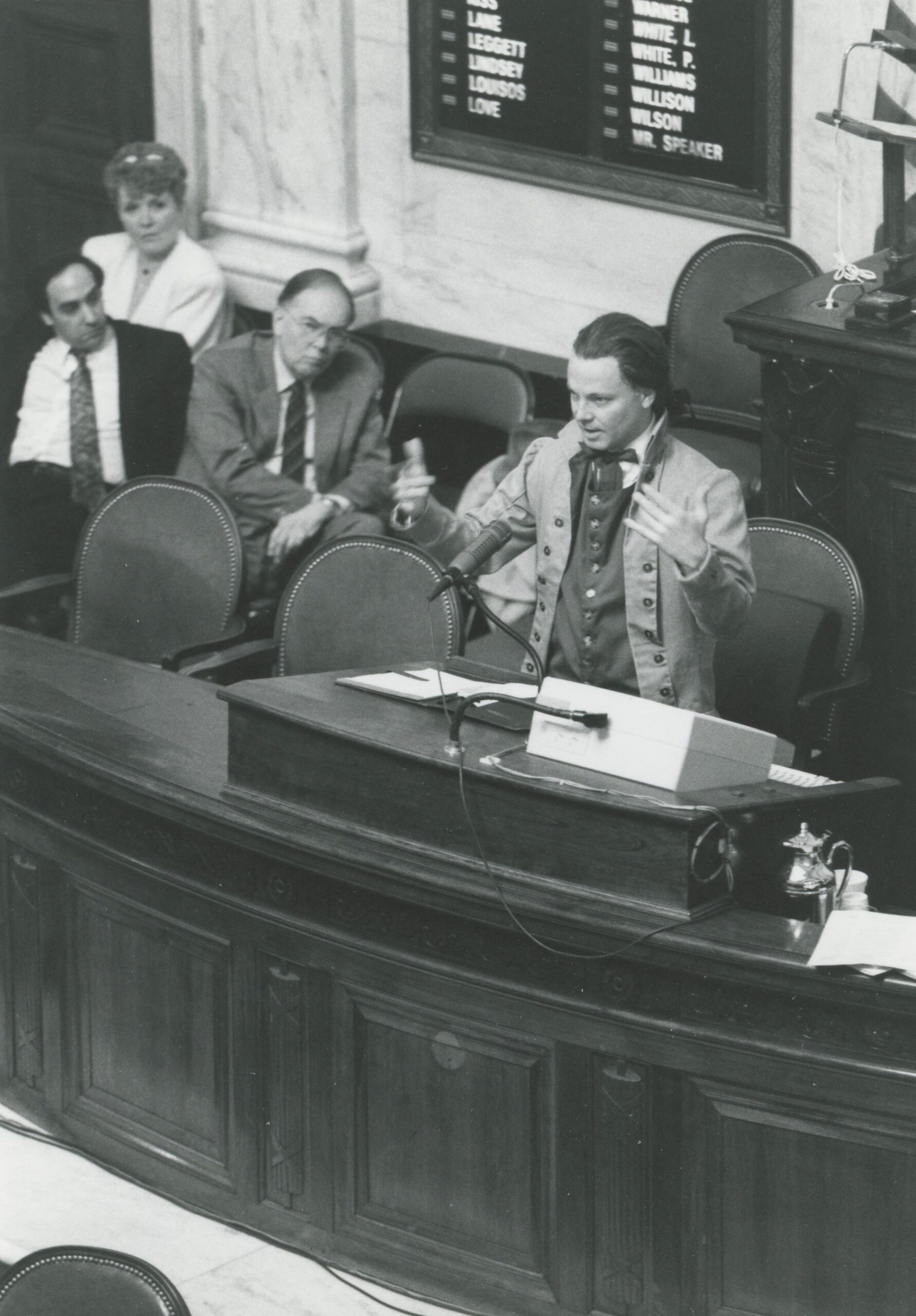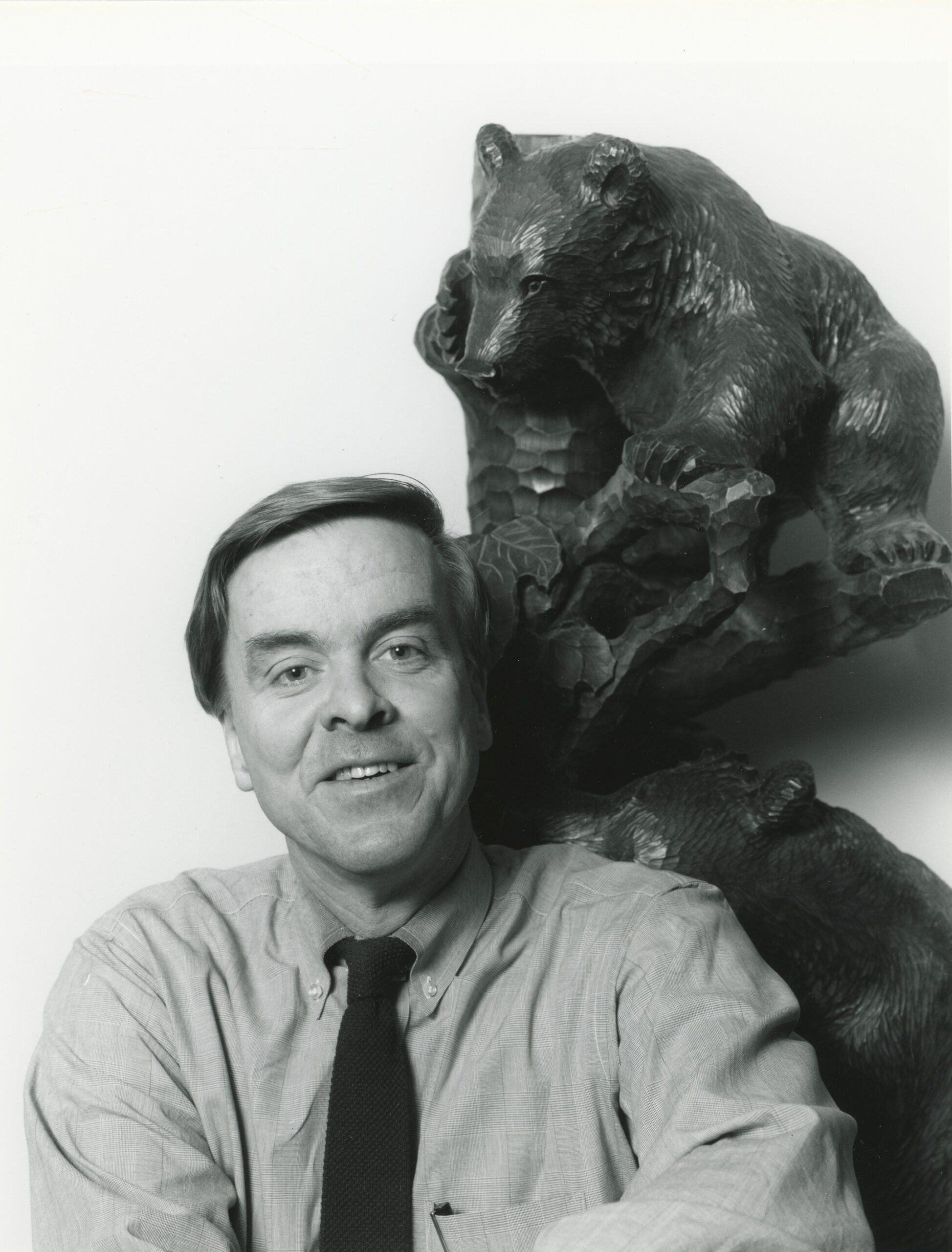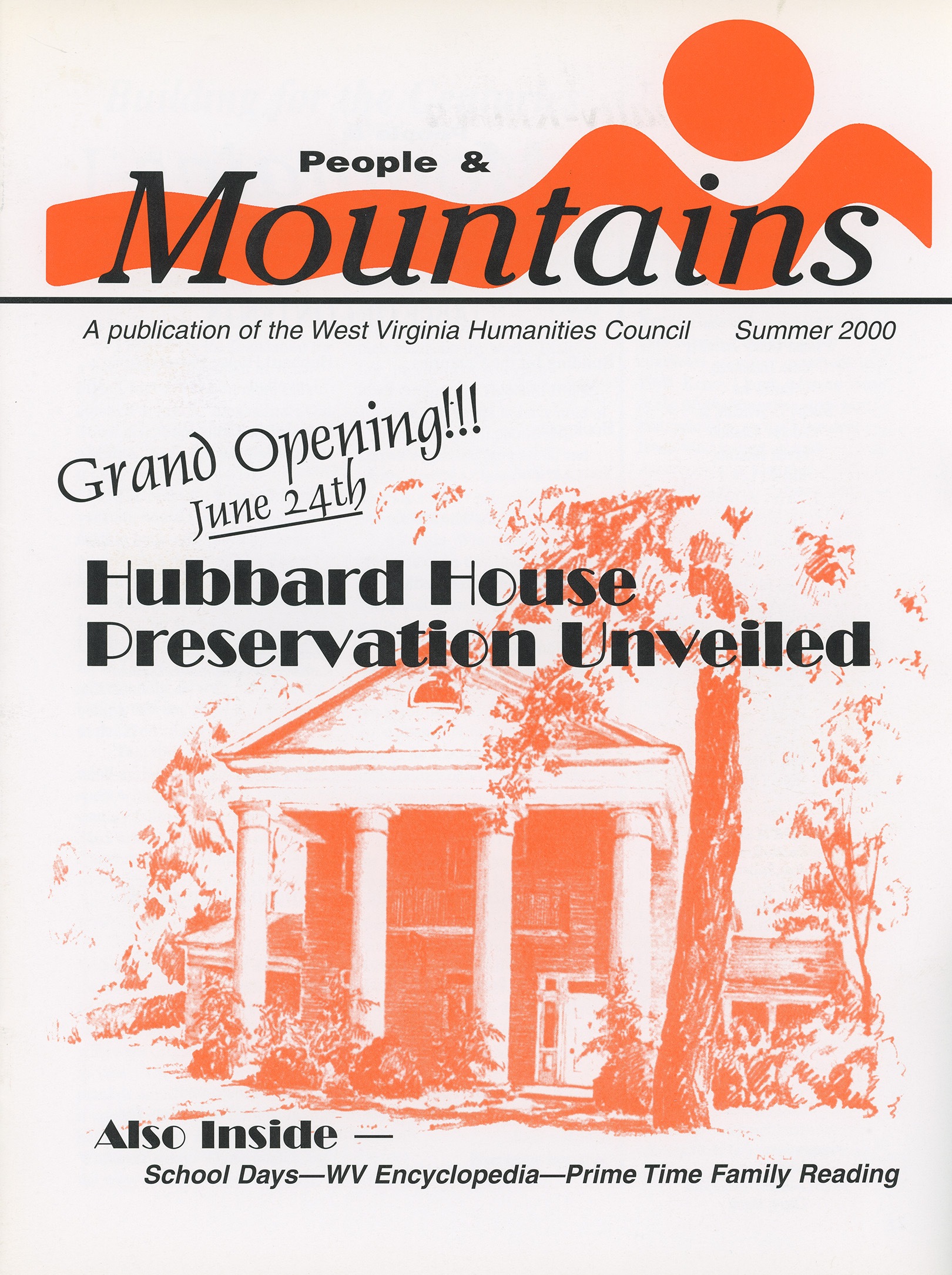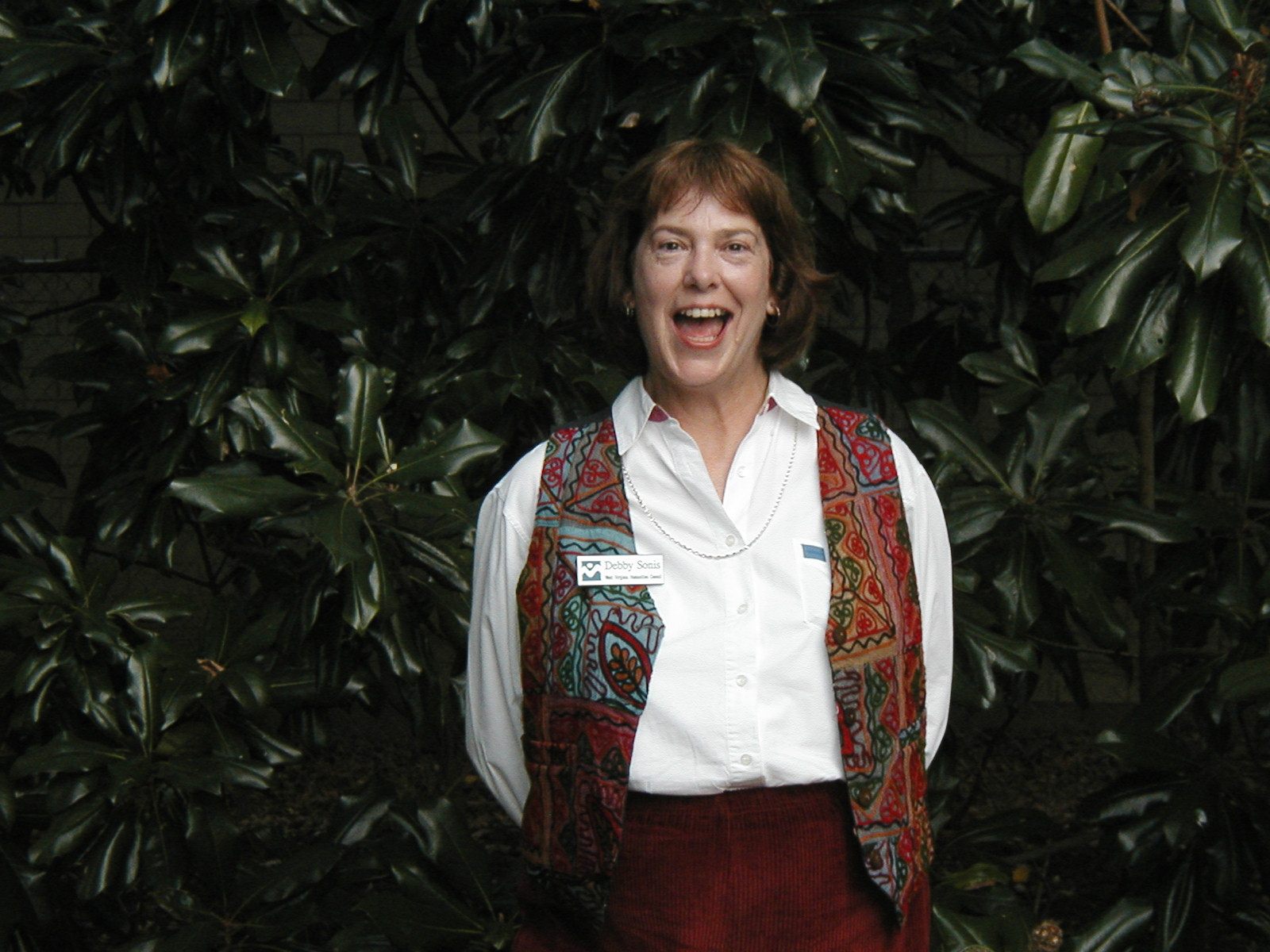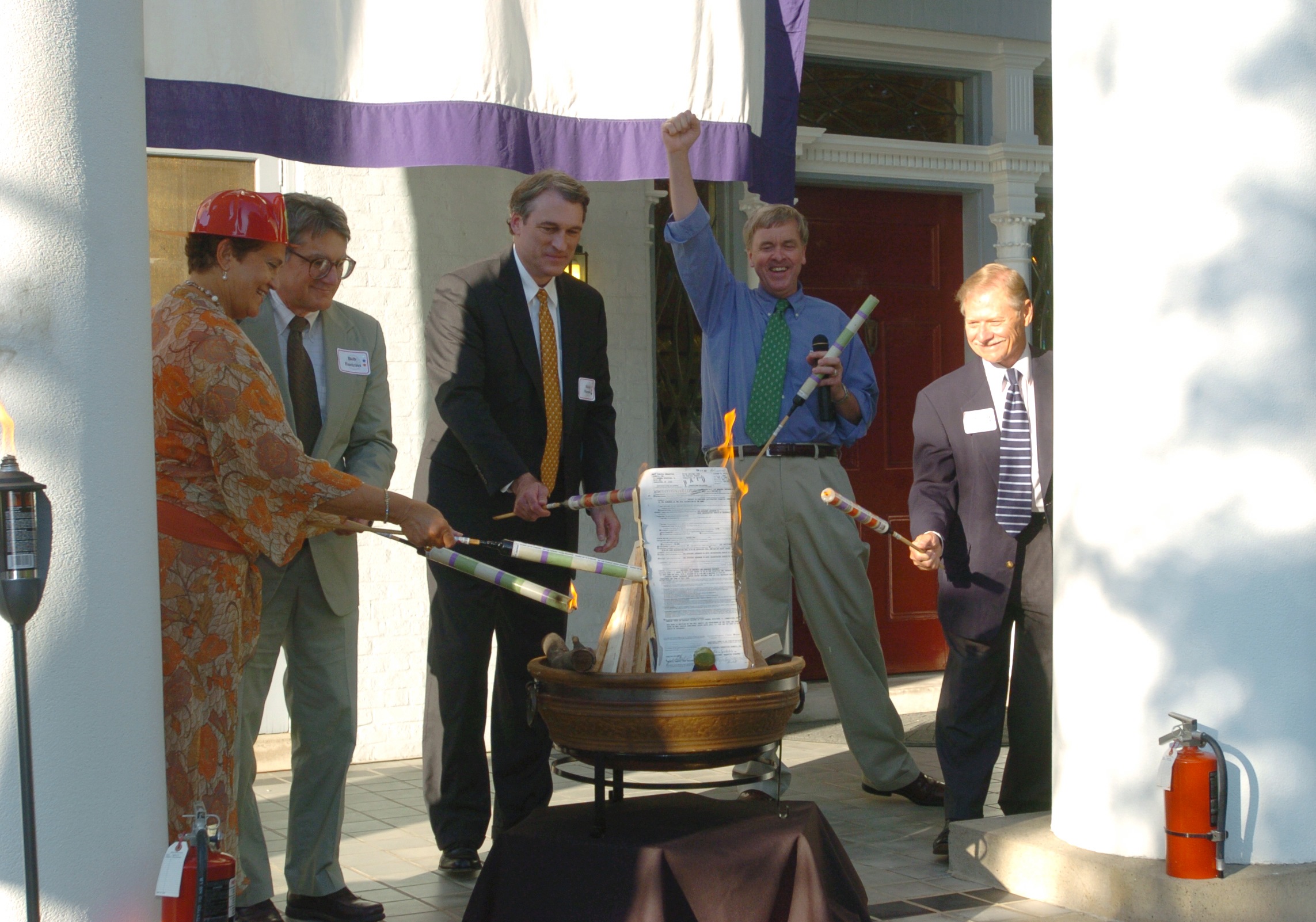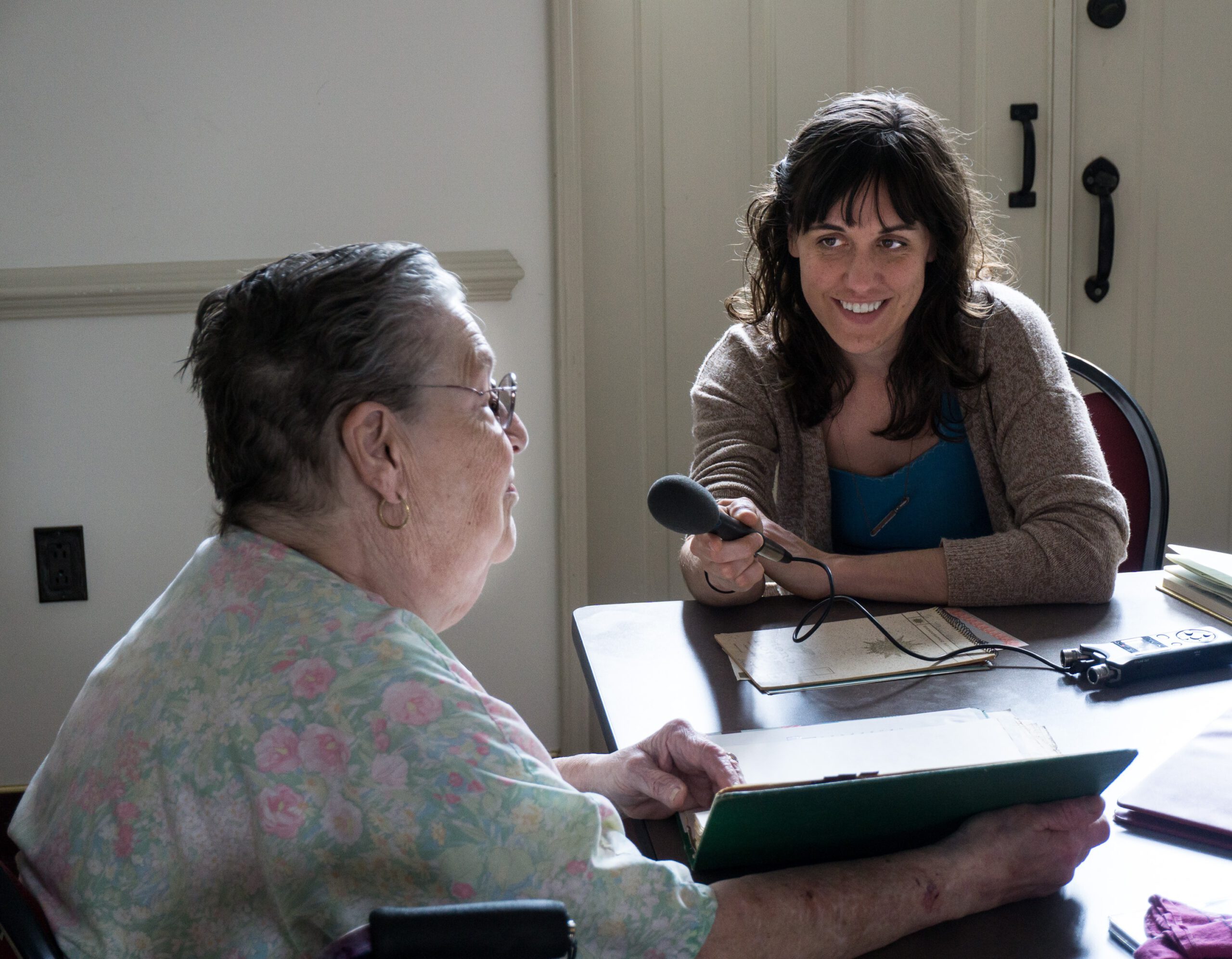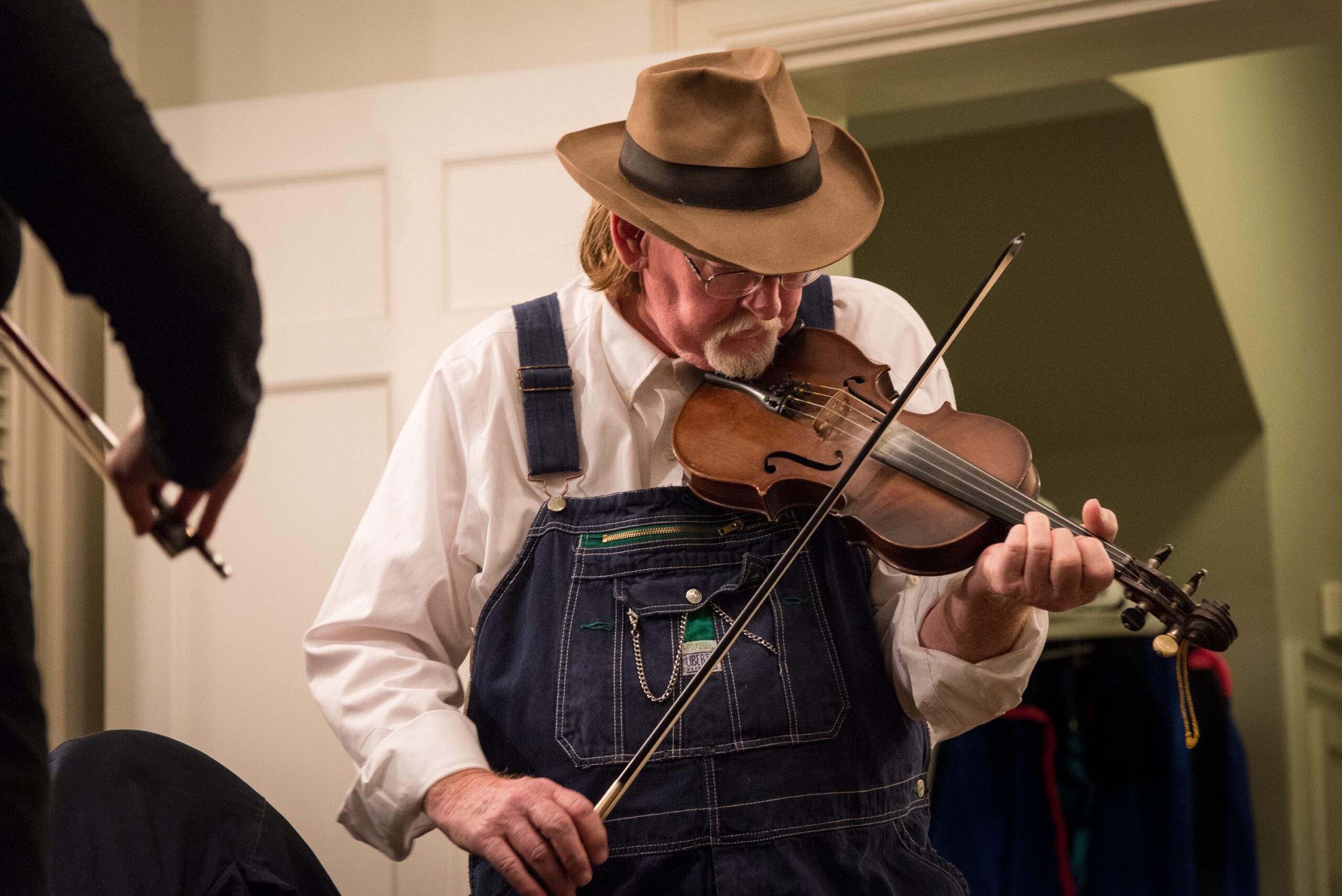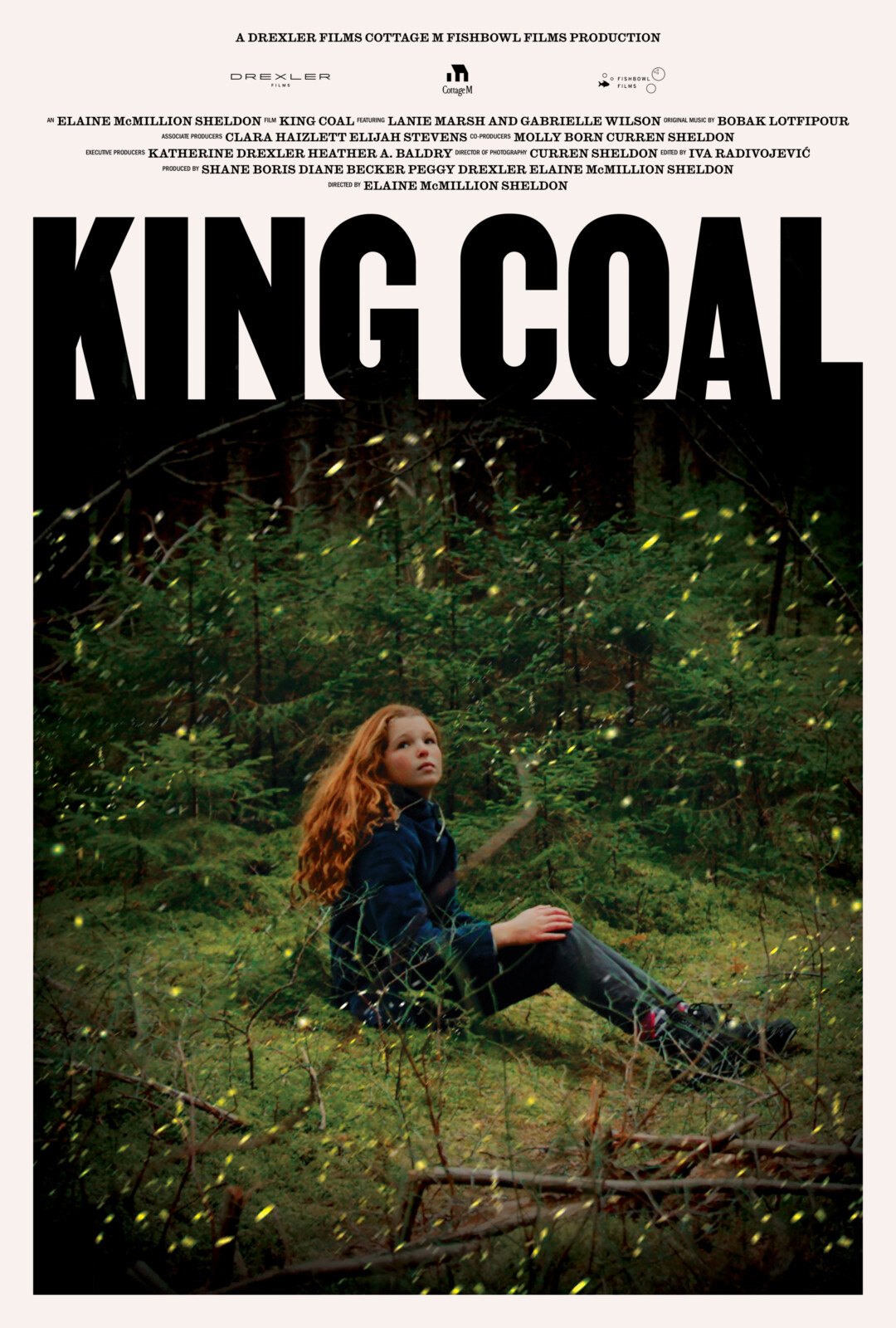-
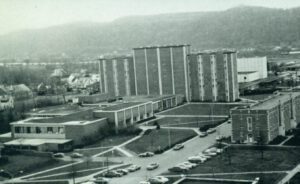 Sullivan Hall at WV State was the Council's home for 14 years! It was here that the organization's mission and impact began to grow.
Sullivan Hall at WV State was the Council's home for 14 years! It was here that the organization's mission and impact began to grow.
-
June 25, 1974
The Council is founded under the original name “Committee for the Humanities and Public Policy in West Virginia” (CHAPP). This title is similar to many other state councils under the initial NEH charter. 10 grants are funded during the first year.
CHAPP’s first two directors are West Virginia University associate professor of English Jack Welch (1974-75; pictured below left) and Paul Nuchims (1975-76), a West Virginia State College art professor from 1961-2001. Each serves for about a year, with the organization’s “offices” moving to their respective institutions.
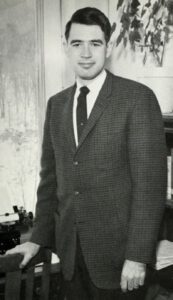
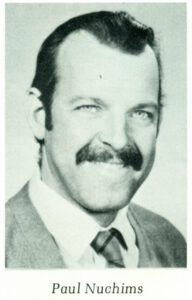
-
1976
The Council (as CHAPP) officially establishes offices on the campus of West Virginia State College (now University) in Institute.
Sullivan Hall at WV State becomes the Council’s home for 14 years! It is here that the organization’s mission and impact begin to grow.
-
February 1, 1976
The first issue of People and Mountains, the official publication of the Council to the present day, is published.
Though the content has changed a little through the years, People and Mountains is essentially the same publication it was half a century ago. It provides a regular record of the Council’s activities.
-
July 1, 1976
Charles “Chuck” Daugherty, a political science professor at Morris Harvey College (now the University of Charleston) is selected as the Council’s first long-term director. Daugherty will serve in this leading role until 1996.
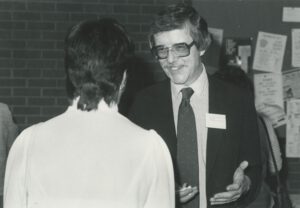
-
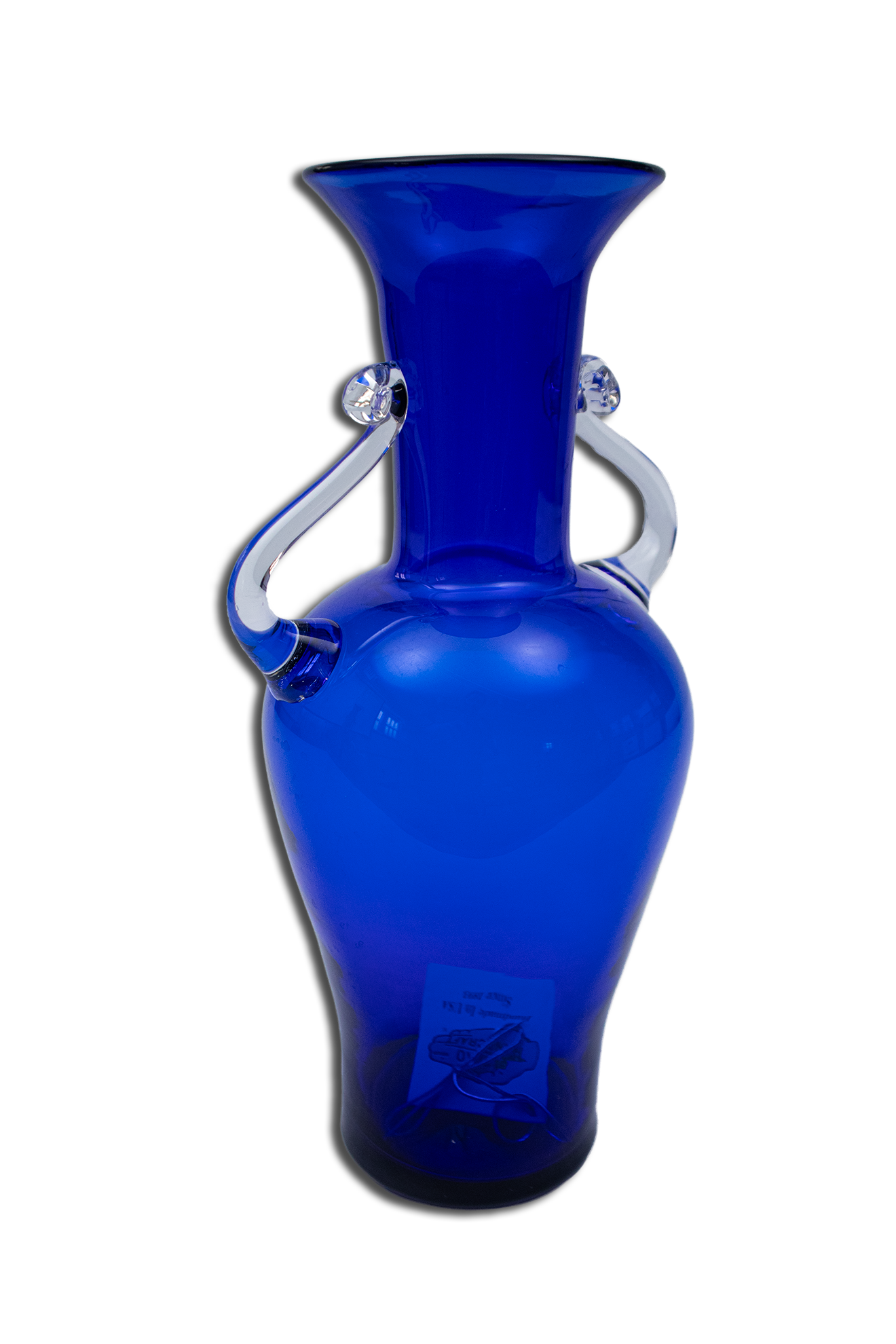
The Council's annual Humanities Award, which was given out for roughly 20 years until 2007, was renamed in latter years to the Daugherty Award in the Humanities. The final awards were special Blenko Glass commemorative pieces.
-
April 1978
The organization changes its name from CHAPP to the “Humanities Foundation of West Virginia.”
-
1979
Appalshop’s Buffalo Creek Revisited receives grant funding.
The documentary film, directed by Mimi Pickering, probes the human side of the 1972 southern West Virginia man-made disaster that claimed 125 lives. The finished documentary premieres in 1985.
The image below is a drawing of one child’s experience during the disastrous flood, as seen in the documentary (image courtesy of Appalshop).
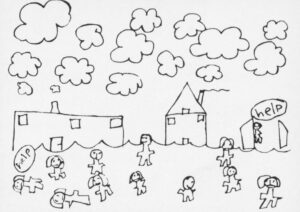
-
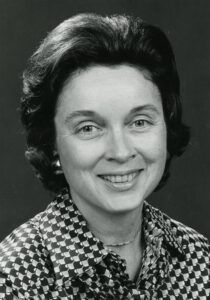 Betsy McCreight was one of the five founding members of CHAPP, and was deeply involved with the Council until her passing in 1985.
Betsy McCreight was one of the five founding members of CHAPP, and was deeply involved with the Council until her passing in 1985.
-
1981
The first Betsy K. McCreight Lecture in the Humanities is held.
Betsy McCreight, who passed away in 1985, was one of five founding members of CHAPP—and the only woman. She championed quality education in West Virginia and remained active with the Council until her unexpected passing. Her sister, Sally Richardson, later joined the Council’s Board of Directors, and Betsy’s family continues to support the McCreight Lecture to this day.
-
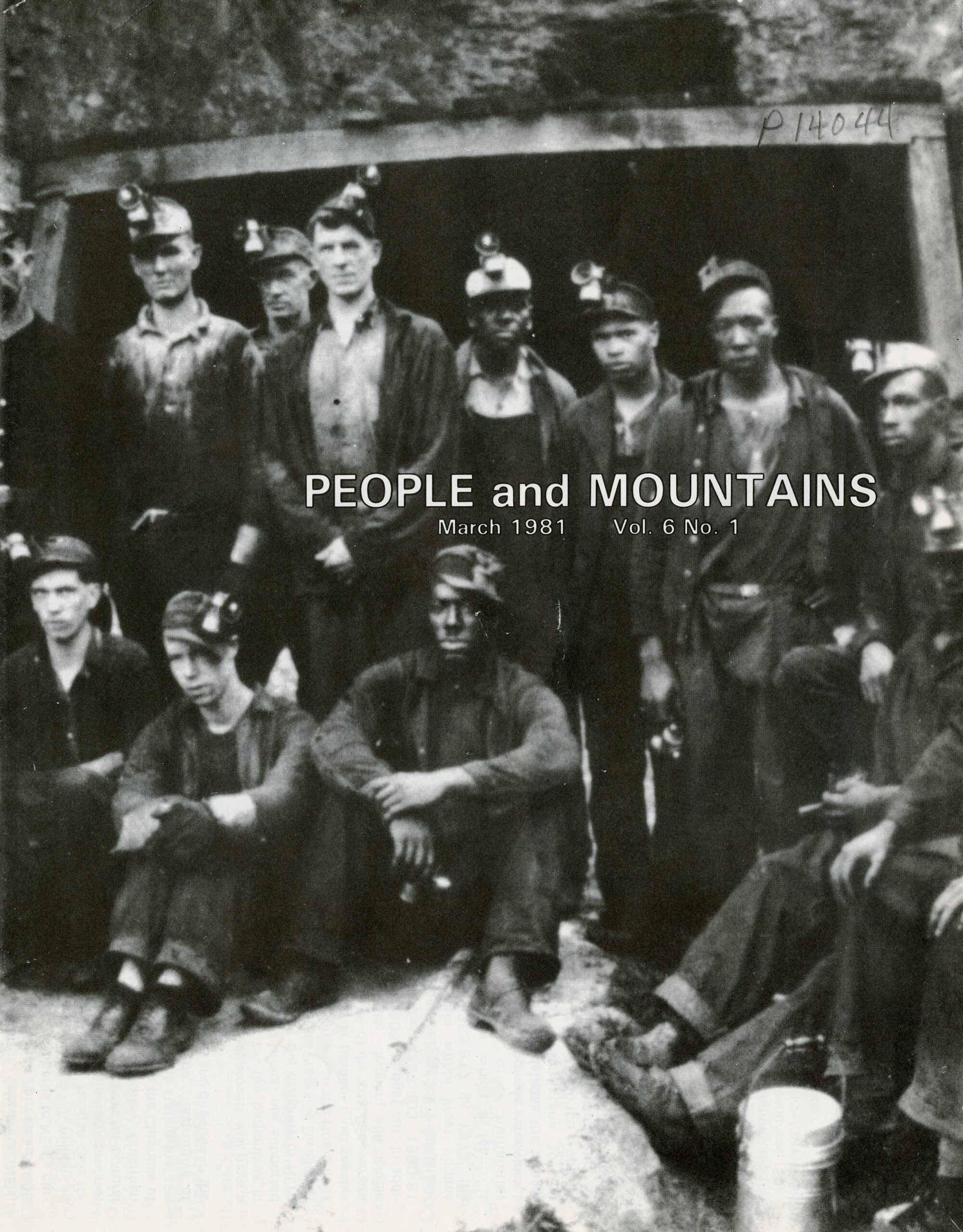
People and Mountains underwent a period of experimentation in the early 1980s, and was sometimes printed with full-cover historical photographs.
-
1984
The Council celebrates its 10th anniversary.
Among many other grants given that year, Arthurdale in Preston County celebrates its own 50th anniversary with Council support.
-
1985
Grant funding supports the Mine Wars documentary, Even the Heavens Weep, and associated public access programming.
-

Long before you could stream videos on the internet, the Council maintained a lending library of humanities videos that people and institutions could borrow. Behold the Land: Wealth of West Virginia (pictured) was one of the collection's earliest titles.
-
1986
Appalshop obtains a Council grant for Chemical Valley, USA, a documentary that dives into the relationship between the Kanawha Valley and Union Carbide in the aftermath of the Bhopal disaster in India (December 1984).
Below, medical staff transport victims hospitalized by a 1985 leak of MIC from Union Carbide’s Institute plant. MIC was the same chemical that killed and injured hundreds of thousands of people in Bhopal, India, in 1984 (image courtesy of Appalshop).
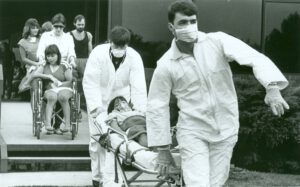
-
August 1987
The Council staff grows to five, adding the new position of Program Officer.
-

This tape recorder was used to interview former staff and board members in the early 2010s about their Council experiences—a practice we're continuing in the present (with newer technology!).
-
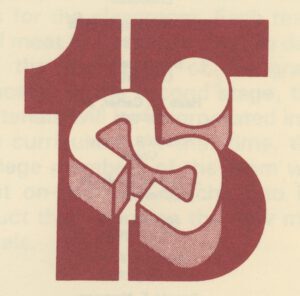 The Council celebrates its 15th anniversary with a unique graphic incorporating the logo from that era (affectionately known among Council staff as "muscle boy").
The Council celebrates its 15th anniversary with a unique graphic incorporating the logo from that era (affectionately known among Council staff as "muscle boy").
-
1989
The Council celebrates its 15th anniversary.
Picture below, Board President James Rowley (left) gives the third annual Humanities Award to Senator Robert C. Byrd (right) in a Charleston ceremony as Board member Hornor Davis IV looks on. Rowley, a career educator who spent over a decade as president of the College of Graduate Studies, had just been appointed to head West Virginia’s new University System earlier in 1989.
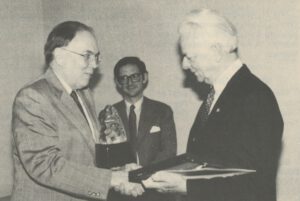
-
February 1, 1990
After 14 years on the campus of West Virginia State College, the Council moves to the Union Building in downtown Charleston (Suite 800).
While working in the Union Building comes with traffic hazards and scant parking, the staff has a great view of Charleston’s Sternwheel Regatta.
-
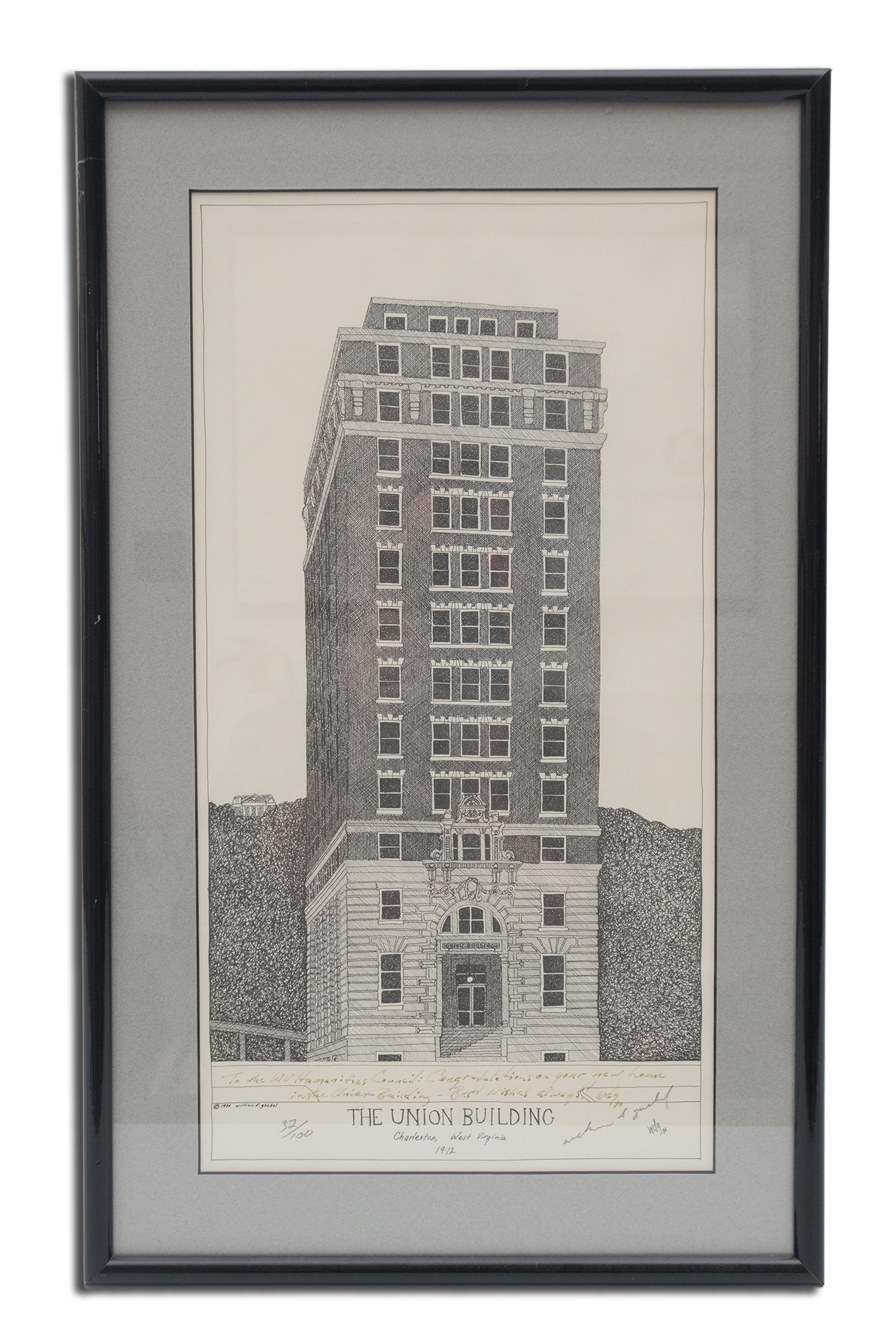
Artist William Goebel presented the Council with a signed copy of his pen-and-ink Union Building piece in 1990 to commemorate our move to the iconic Charleston structure.
-
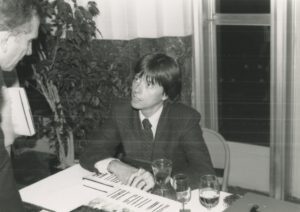 Ken Burns signs books at University of Charleston following his 1990 McCreight Lecture in the Humanities.
Ken Burns signs books at University of Charleston following his 1990 McCreight Lecture in the Humanities.
-
May 2, 1990
The Humanities Foundation of West Virginia adopts its present-day name: the West Virginia Humanities Council.
This update is meant to capture the ever-expanding scope of the Council’s program and grant offerings. The May 1990 issue of People & Mountains is the first to carry the new name in the masthead.
-
1990
Documentary filmmaker and author Ken Burns delivers the 1990 McCreight Lecture in the Humanities on the heels of his breakout success, the PBS series “The Civil War.” Burns cites the experience as a homecoming since his mother was born in Hillsboro, Pocahontas County.
-
1990
The History Alive! program is inaugurated, then known as West Virginia Chautauqua.
Early characters include James Weldon Johnson, Governor William Marland, Mike Fink, Eleanor Roosevelt, Stephen Foster, Anna Kennedy Davis, and Mother Jones.
Below, Karen Vuranch’s Mother Jones is presented in a 1991 issue of People & Mountains. After a brief hiatus in the 2010s, Vuranch returned to the roster with Mother Jones and Pearl S. Buck in 2022.
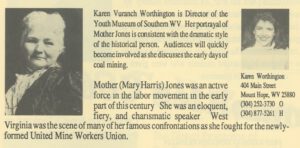
-
May 1991
Famous Thomas Jefferson reenactor and scholar Clay Jenkinson appears before the West Virginia legislature in a Council-sponsored presentation. Additional presentations follow across the state.
-
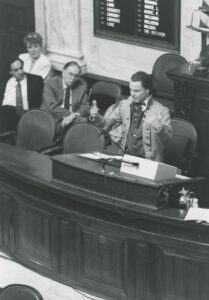 Board President James Rowley and state legislators look on as Clay Jenkinson gives his Thomas Jefferson presentation in the State Capitol.
Board President James Rowley and state legislators look on as Clay Jenkinson gives his Thomas Jefferson presentation in the State Capitol.
-
1991
The Council supports appearances of the traveling exhibit Always A River: The Ohio River and the American Experience. The floating exhibit stops in Wheeling, Parkersburg, Point Pleasant, Charleston, and Huntington.

-
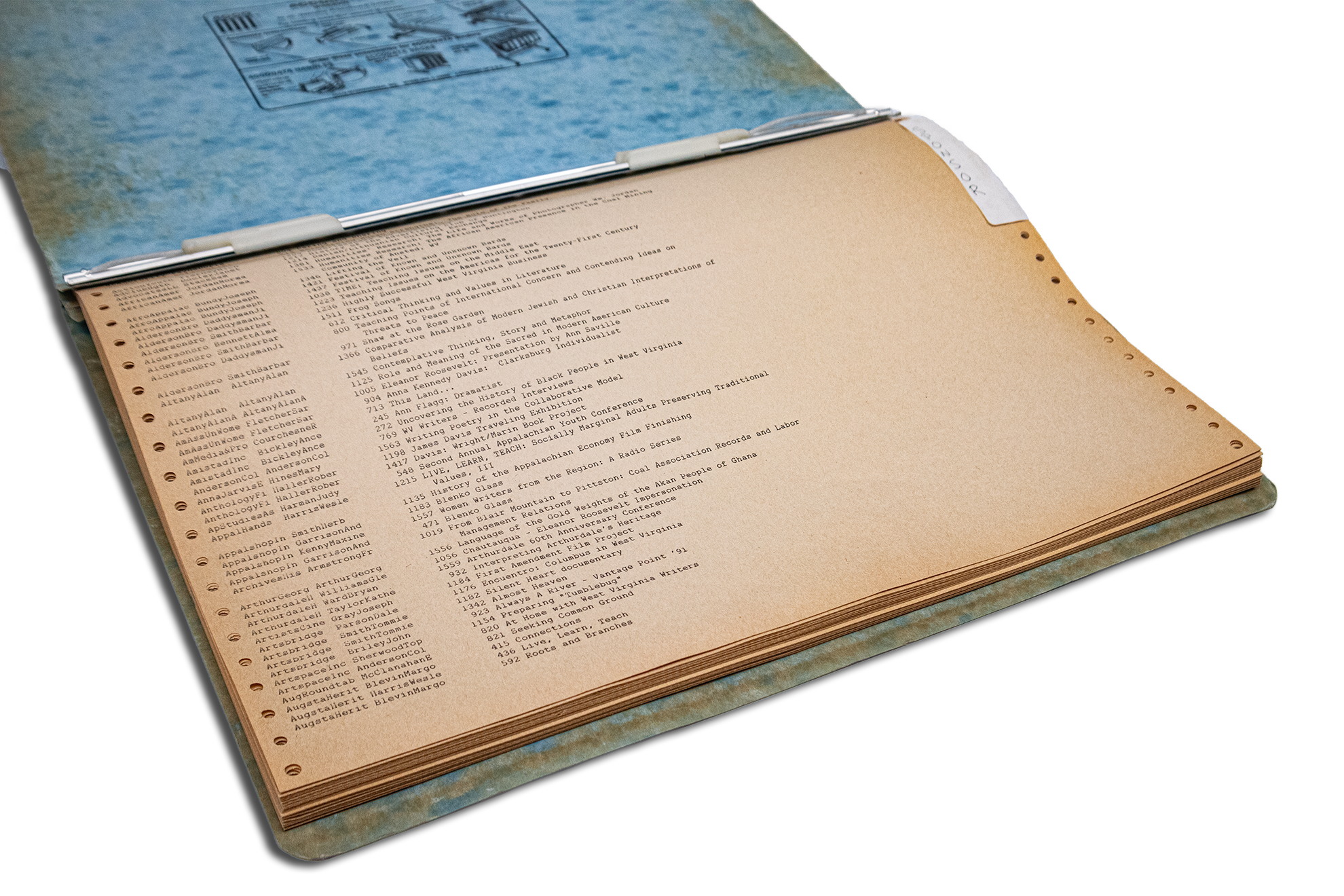
Dot matrix! This 1991 grant ledger records all of the projects funded by the Council that year.
-
1993
The Council provides the first of several grants for West Virginia: A Film History, which will later premiere in 1995.
A grant from the Council also partially funds a Civil War conference at Shepherd University featuring several Pulitzer Prize winners and nominees: historians James McPherson, Eric Foner, and James Robertson.
James McPherson would later deliver the Council’s McCreight Lecture in the Humanities in 2000.
-
February 1994
Renowned West Virginia author Mary Lee Settle delivers the McCreight Lecture for the Council’s 20th anniversary.
-
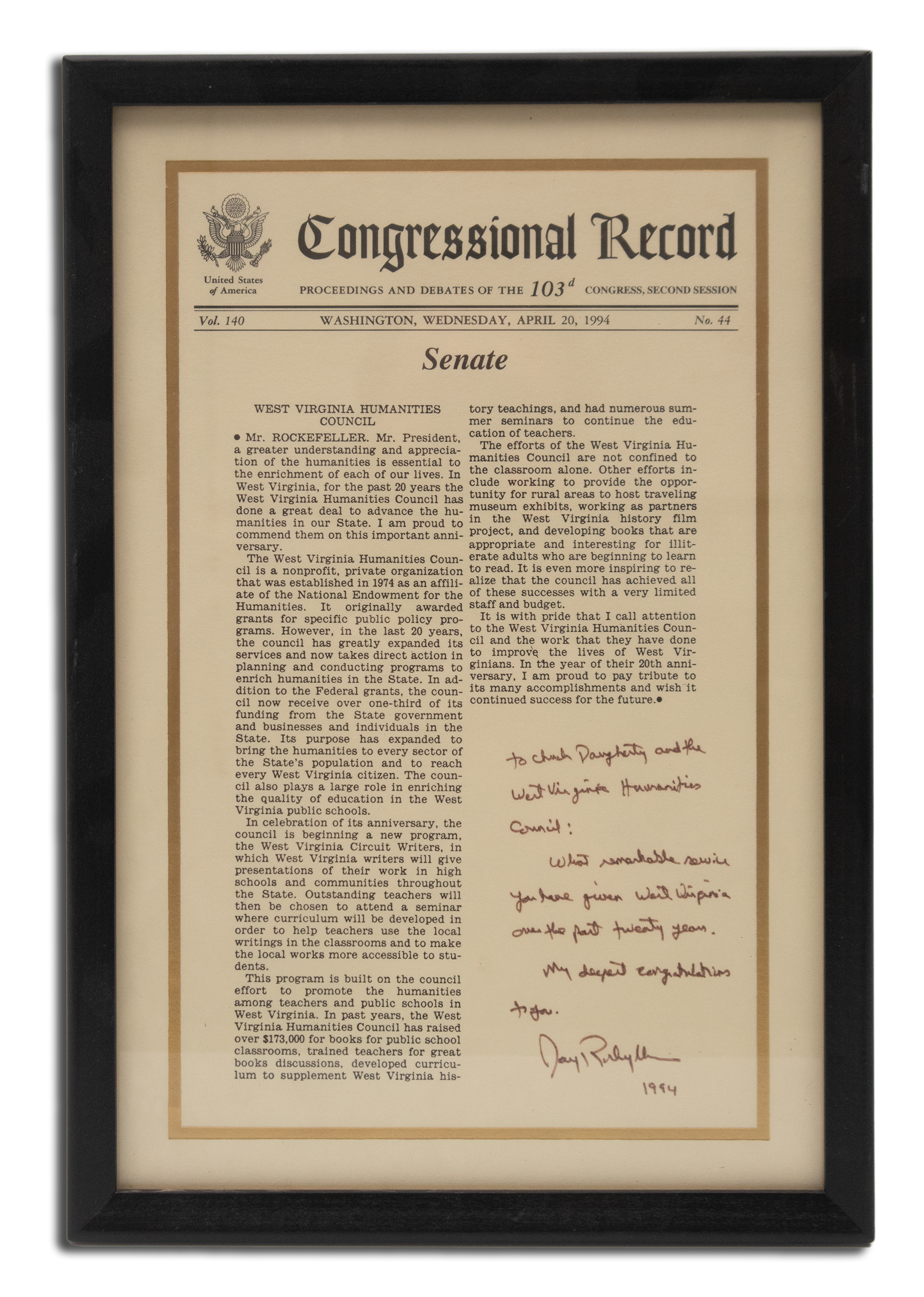
In 1994, U.S. Senator Jay Rockefeller commemorated the Council's 20th year with remarks on the Senate floor. He later sent a signed copy to executive director Chuck Daugherty.
-
February 1995
West Virginia: A Film History premieres on WV Public Broadcasting. A full-page spread in the Beckley Register-Herald newspaper accompanies the documentary’s television premiere.
-
October 1995
Mineral County-born historian Henry Louis Gates Jr. gives the annual McCreight Lecture at Shepherd University, accompanied by a reading from his new memoir, Colored People, about growing up in Piedmont, West Virginia. The Council also presents the scholar with that year’s annual Humanities Award.
Below, Gates as he appeared in a 1995 People and Mountains.
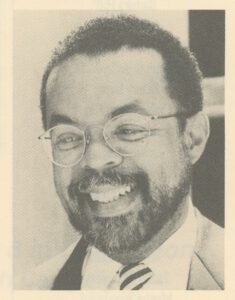
-
October 4, 1996
The Council bids farewell to longtime executive director Chuck Daugherty in an event at the University of Charleston upon his retirement.
-
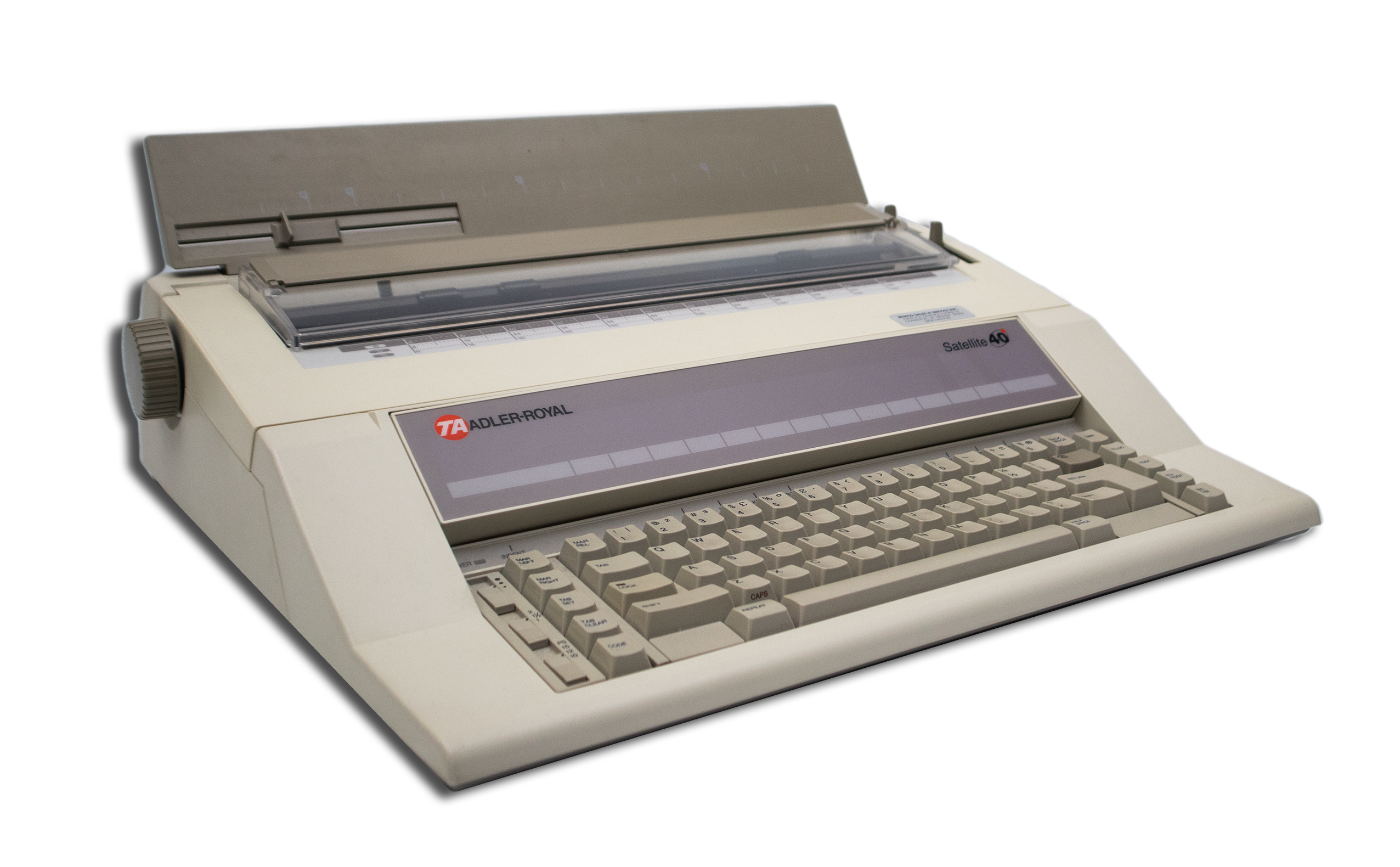
Not all technological changes are fast! Staff member Carol Nutter used this electric typewriter from the 1990s well into the 2010s—mostly to type addresses on envelopes.
-
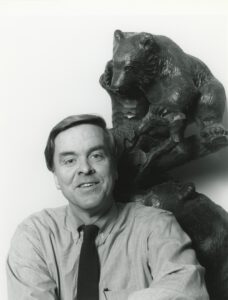 Ken Sullivan, Executive Director, 1997-2018
Ken Sullivan, Executive Director, 1997-2018
-
February 1997
Ken Sullivan becomes executive director.
Sullivan previously edited Goldenseal magazine from 1979 until moving to the Council nearly 20 years later. To date, he is the longest-serving Council director (1997-2018).
-
June 1997
The Council hosts its first West Virginia heritage bus tour, led by Executive Director Ken Sullivan.
In the photo below from the 2001 bus tour, Droop Mountain Battlefield State Park Superintendent Mike Smith uses Sullivan’s bullhorn to address the tour guests.
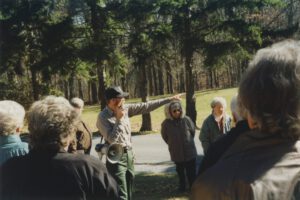
-
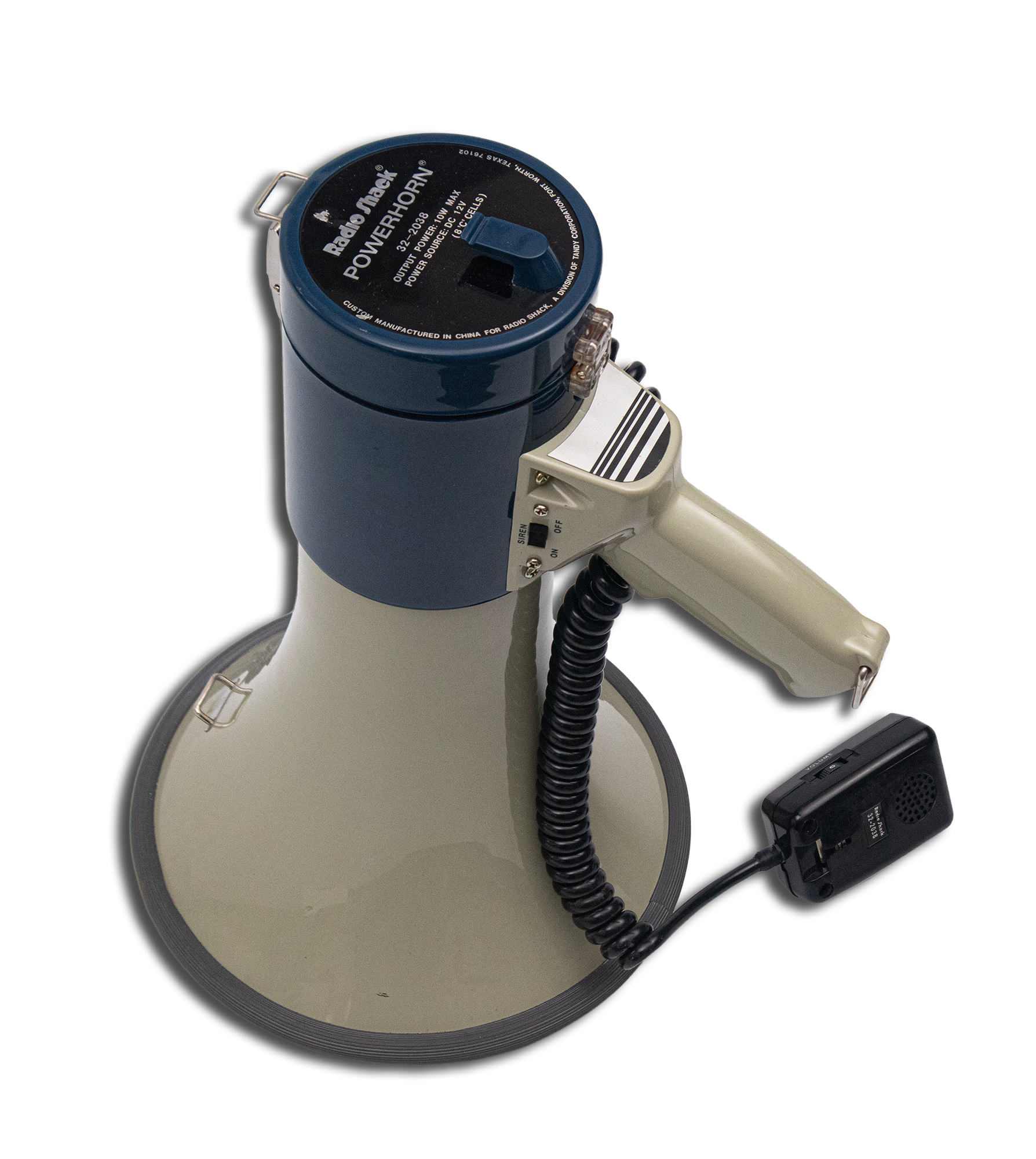
Former Executive Director Ken Sullivan's bullhorn, frequently used on Council bus tours.
-
1999
The Council purchases the 1836 MacFarland-Hubbard House on Kanawha Boulevard in Charleston, heretofore a private residence, as its new headquarters. Renovation begins immediately.
-
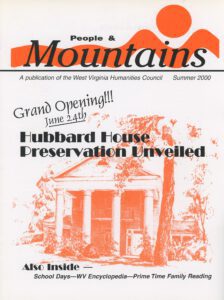 People & Mountains Summer 2000 issue promoting our historic house's grand opening.
People & Mountains Summer 2000 issue promoting our historic house's grand opening.
-
June 24, 2000
Staff moves into the MacFarland-Hubbard House and holds a grand opening the day before the Council’s 26th birthday.
Below, Executive Director Ken Sullivan proudly displays the MacFarland-Hubbard House’s 6-pound cannonball to the crowd at the grand opening, a Civil War relic that may have hit the house during the 1862 Battle of Charleston.
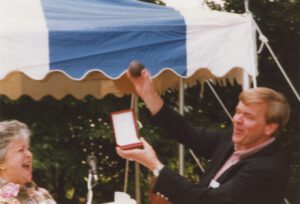
-
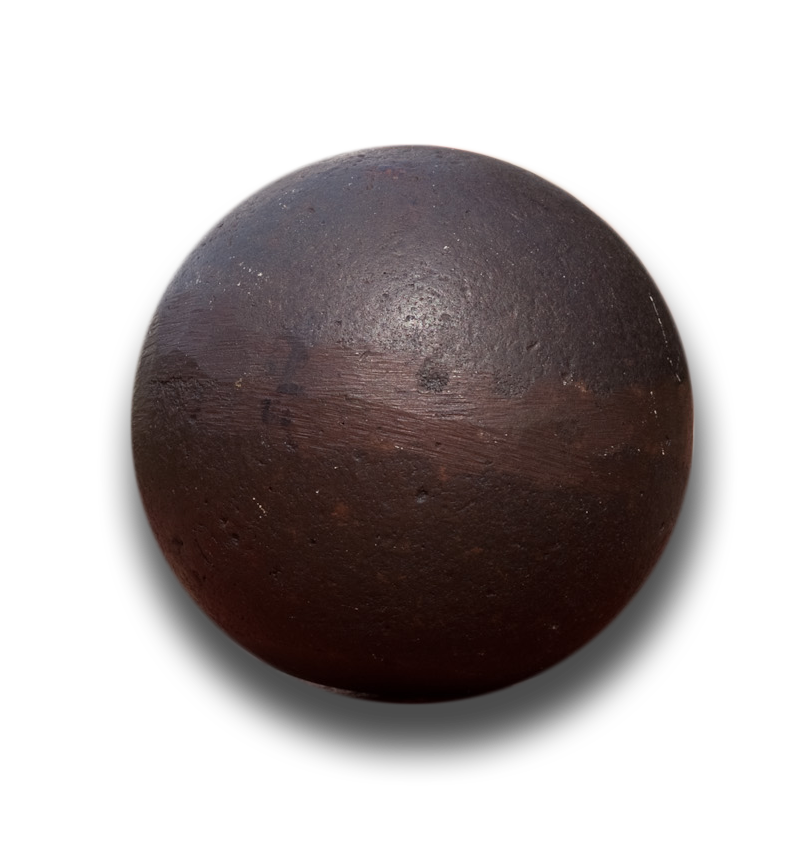
A cannonball that may have struck the house during the 1862 Battle of Charleston is one of the Council's prize possessions.
-
2001
The Council is a major sponsor of the very first West Virginia Book Festival, a role in which it has continued ever since. In addition to providing funding, the Council serves on the author/program selection committee each year.
-
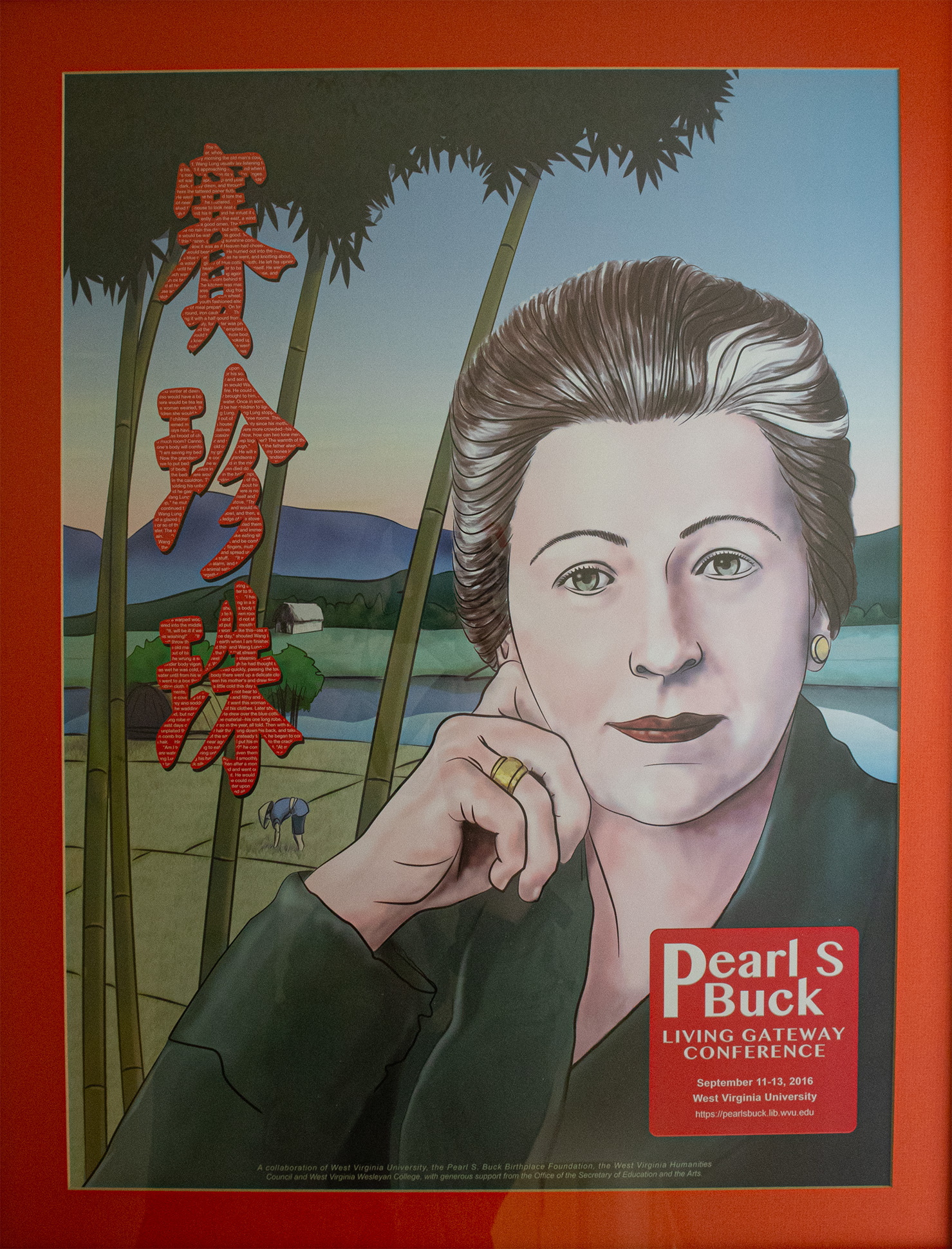
The Council's commitment to West Virginia's literary voices has been going strong for 50 years. We were a founding sponsor of the Pearl S. Buck Living Gateway Conference, which began in 2016.
-
March 2002
Our now-beloved Little Lectures series formally begins its March-June cycle (though one lecture had taken place prior in December 2001). It has continued in the same format—and at the same admission price—ever since.
To archive and expand the program’s audience, the Council would begin filming these lectures in 2020.
-
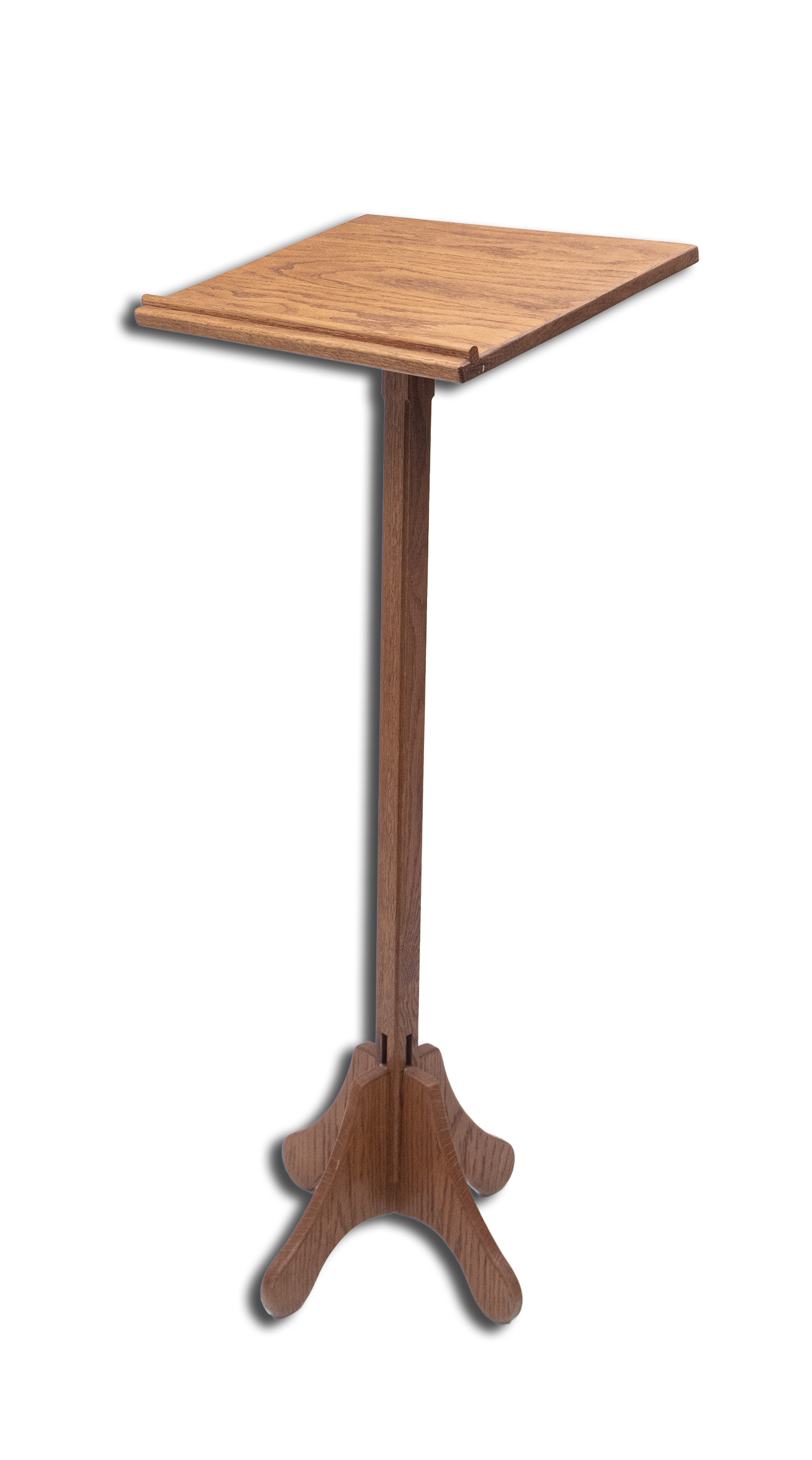
Little Lectures speakers have used many lecterns over the years, but this one will be the most familiar to regular attendees.
-
July 17, 2002
Historian David McCullough makes a special lecture appearance at the Culture Center in Charleston, sponsored in part by the Council. He speaks at length—and without any notes—about his new John Adams biography.
-
2003
The Council hosts the Smithsonian Museum on Main Street Yesterday’s Tomorrows traveling exhibit, cementing the tradition of touring a Smithsonian exhibit statewide every few years.
-
2003
Renovation work on the MacFarland-Hubbard House’s Carriage House begins. Situated in the rear of the property, it now boasts two offices and a meeting room.
-
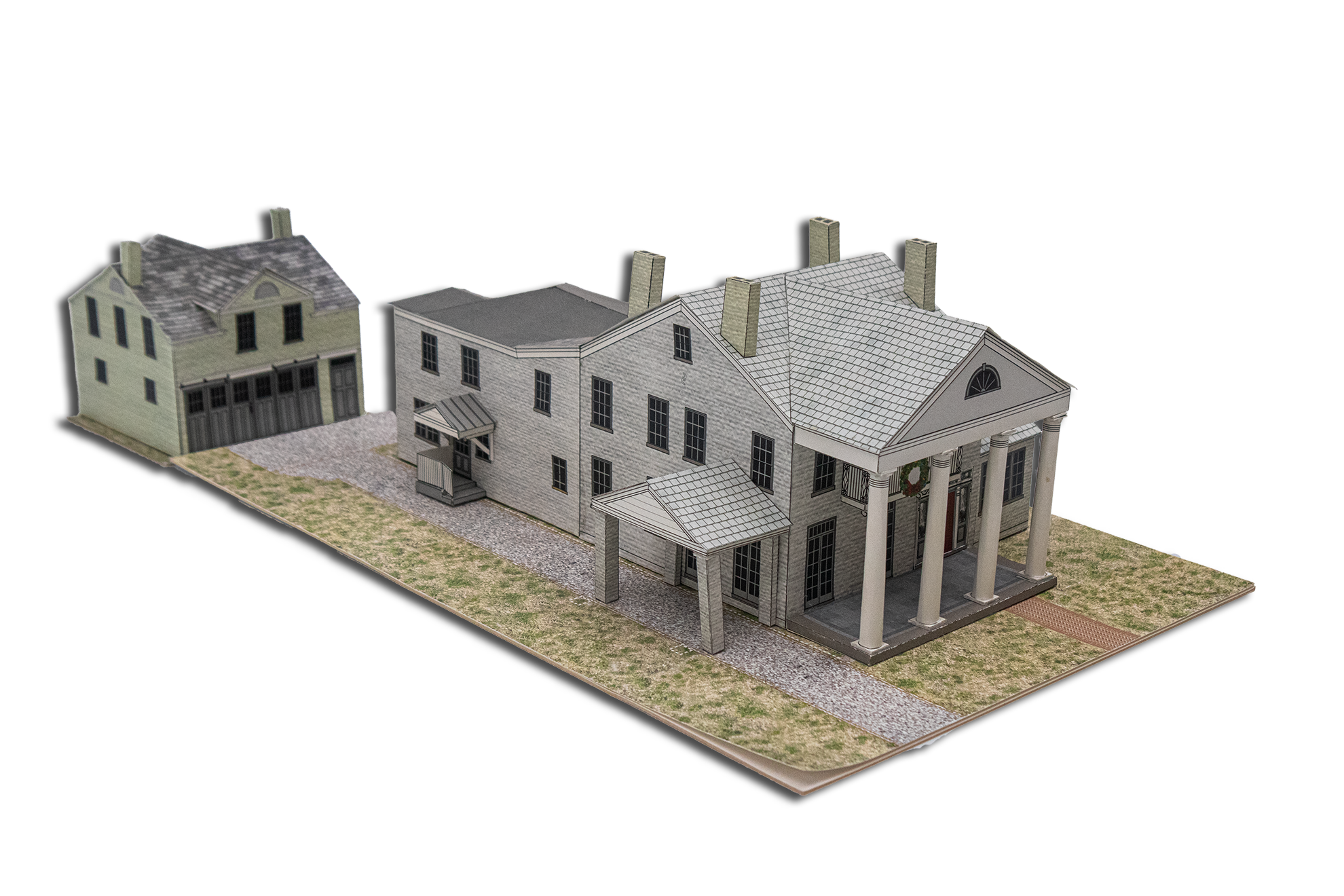
The Carriage House can be seen on the left in this paper model of the MacFarland-Hubbard House, made in 2019 by former staff member Paul Zuros.
-
2004
The Council celebrates its 30th anniversary! Now located in a permanent home with both office and programming space, the Council continues to expand its work.
-
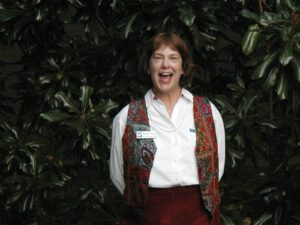 Staffer Debby Sonis shares her enthusiasm during the 30th anniversary reception at the MacFarland-Hubbard House. Sonis worked at the Council for two decades, retiring in 2018.
Staffer Debby Sonis shares her enthusiasm during the 30th anniversary reception at the MacFarland-Hubbard House. Sonis worked at the Council for two decades, retiring in 2018.
-
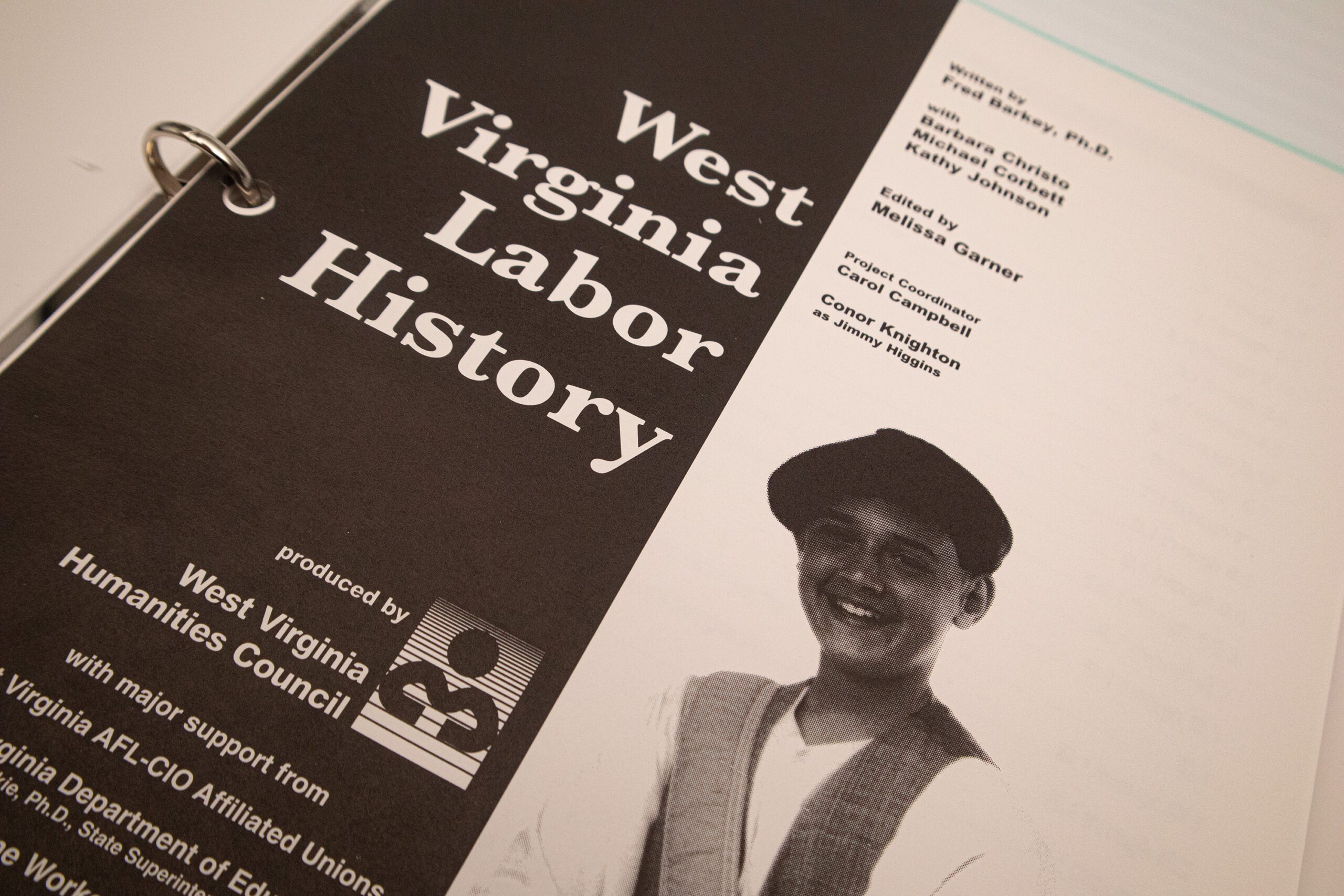
Before he was famous, television journalist Conor Knighton "starred" as "Jimmy the Newsboy" in the Council's labor history curriculum (grades 8-12), released in the early 2000s.
-
2004
Council coordinates a statewide tour of the Smithsonian traveling exhibit, Produce for Victory: Life on the Home Front.
-
2005
The first major Council traveling exhibit, Born of Rebellion, begins touring. In the eastern panhandle, the Council sponsors Jayne Anne Phillips to be the Appalachian Writer-in-Residence at Shepherd University.
Below, former Governor Cecil Underwood visits Born of Rebellion during its installation in Charleston in 2005.
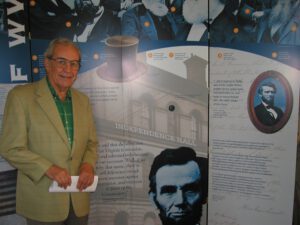
-
2006
The print edition of the West Virginia Encyclopedia is released to much fanfare after eight long years of work.
Below, historian Charles B. Keeney, one of the West Virginia Encyclopedia‘s many contributing authors, speaks to news cameras at the Culture Center during the Encyclopedia‘s launch event.
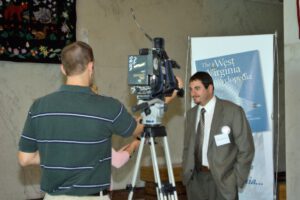
-
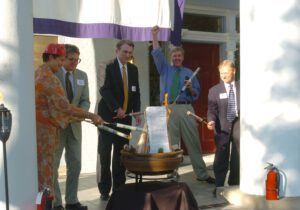 Council leadership burns the MacFarland-Hubbard House's paid-off mortgage less than a decade after the property's purchase. From left to right: Dee Kapourales, Bob Bastress, Henry Harmon, Ken Sullivan, and Ken Bailey.
Council leadership burns the MacFarland-Hubbard House's paid-off mortgage less than a decade after the property's purchase. From left to right: Dee Kapourales, Bob Bastress, Henry Harmon, Ken Sullivan, and Ken Bailey.
-
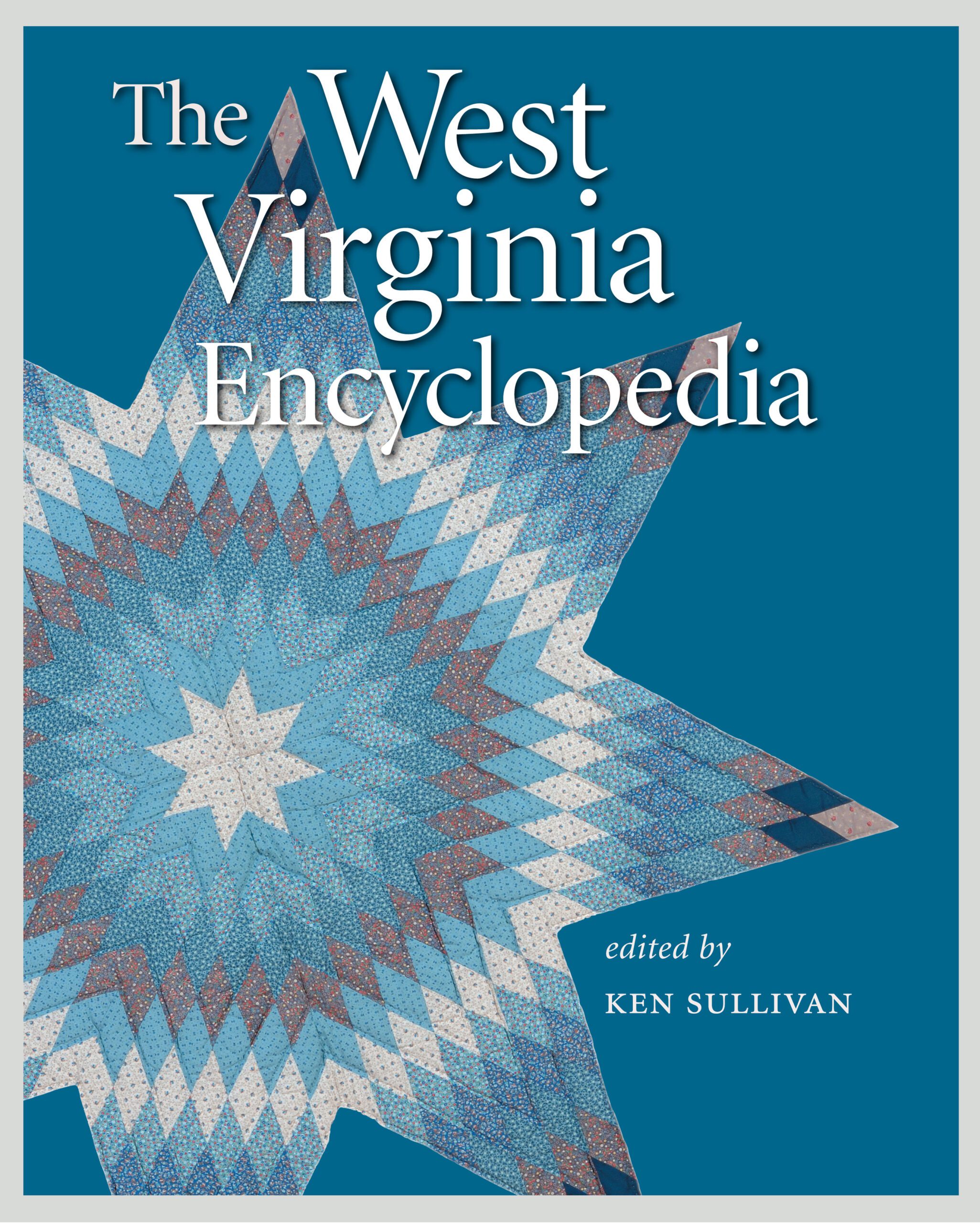
The West Virginia Encyclopedia became an instant classic, and can still be found in most libraries around the state.
-
June 20, 2007
The Council celebrates West Virginia Day with a burning of the MacFarland-Hubbard House’s fully paid-off mortgage.
-
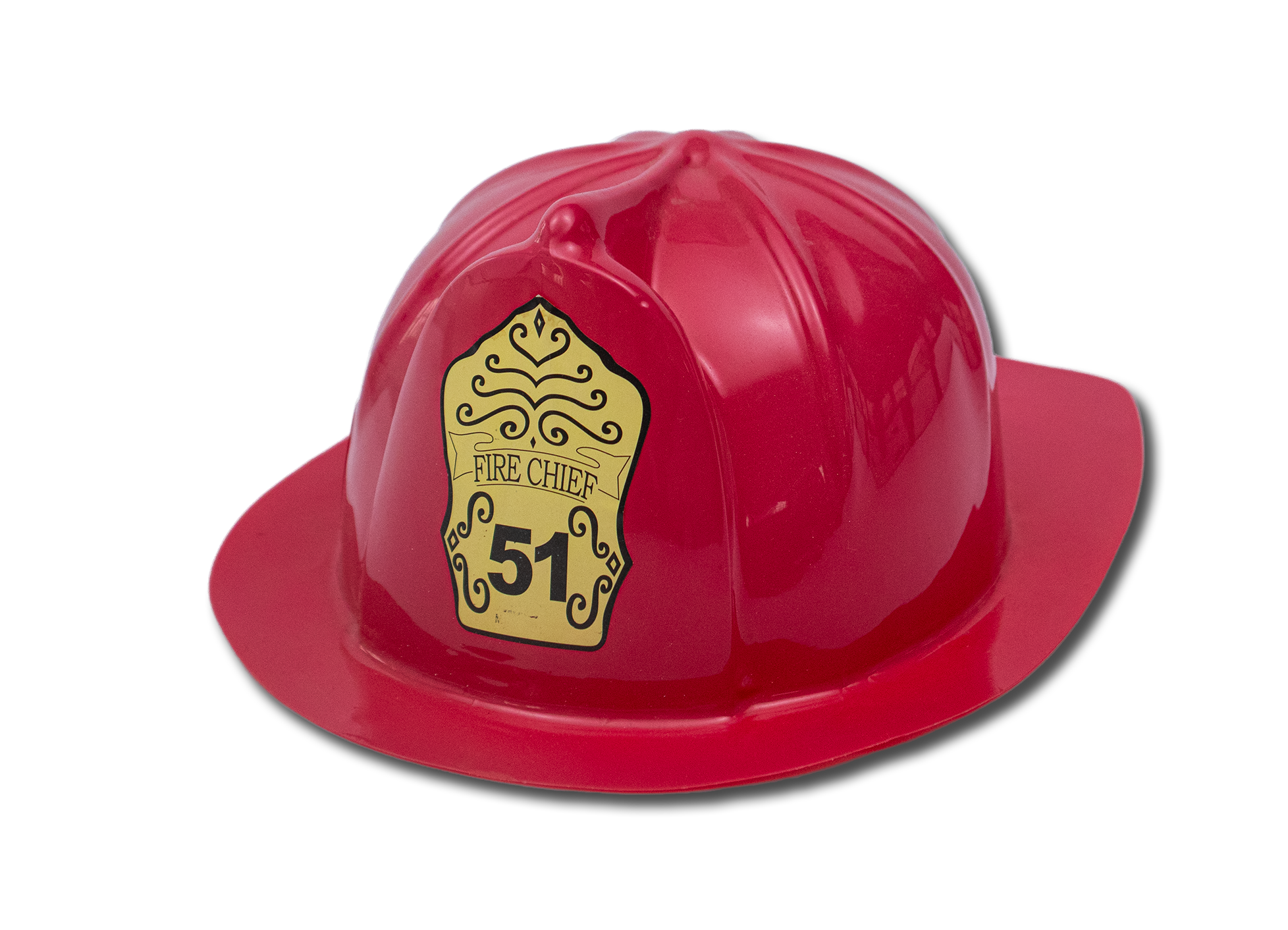
This plastic fire chief helmet was worn as a joke by Board Vice President Dee Kapourales at the 2007 mortgage burning.
-
2008
The Council’s second in-house traveling exhibit, John Henry: The Steel Drivin’ Man, begins touring. It visits 23 sites in 24 months. Several years later, it will be donated to a site in Talcott to help preserve the legacy of this quintessentially American tale.
-
2009
Another Smithsonian exhibit, New Harmonies, is hosted by The Council.
Below, students and visitors in Williamson, Mingo County, crowd the New Harmonies venue.
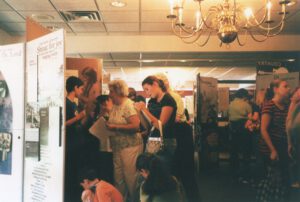
-

A Council-sponsored radio documentary about the 1974 "Textbook War" garnered national awards in 2009.
-
2010
The online West Virginia Encyclopedia (eWV) is released, making the full contents of the book—and more—available to the world free of charge. To this day, eWV is one of the most reliable sources of information on West Virginia anywhere on the web.
-
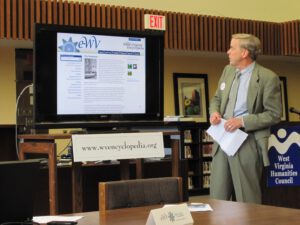 Executive Director Ken Sullivan presents the brand-new online West Virginia Encyclopedia during a 2010 launch event at the Culture Center.
Executive Director Ken Sullivan presents the brand-new online West Virginia Encyclopedia during a 2010 launch event at the Culture Center.
-
2011
Smithsonian Museum on Main Street returns to West Virginia with The Way We Worked exhibit tour.
-
2011
The MacFarland-Hubbard House celebrates its 175th birthday (1836-2011), which in turn kicks off programming for the American Civil War sesquicentennial. Many lectures, events, and a fresh tour of the Born of Rebellion exhibit will follow through 2015.
Below, a set of special cupcakes feature images of the house.

-
2014
We host the Smithsonian Hometown Teams exhibit statewide.
Below, volunteers set up Hometown Teams at the Parkersburg Arts Center.
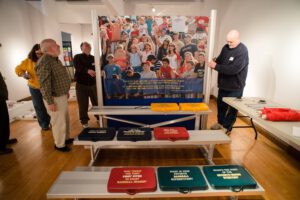
-
2015
The Council’s traveling exhibit, American Blood Feud: The Hatfields and the McCoys, debuts and begins touring the state. Almost a decade later, the exhibit remains in high demand.
-
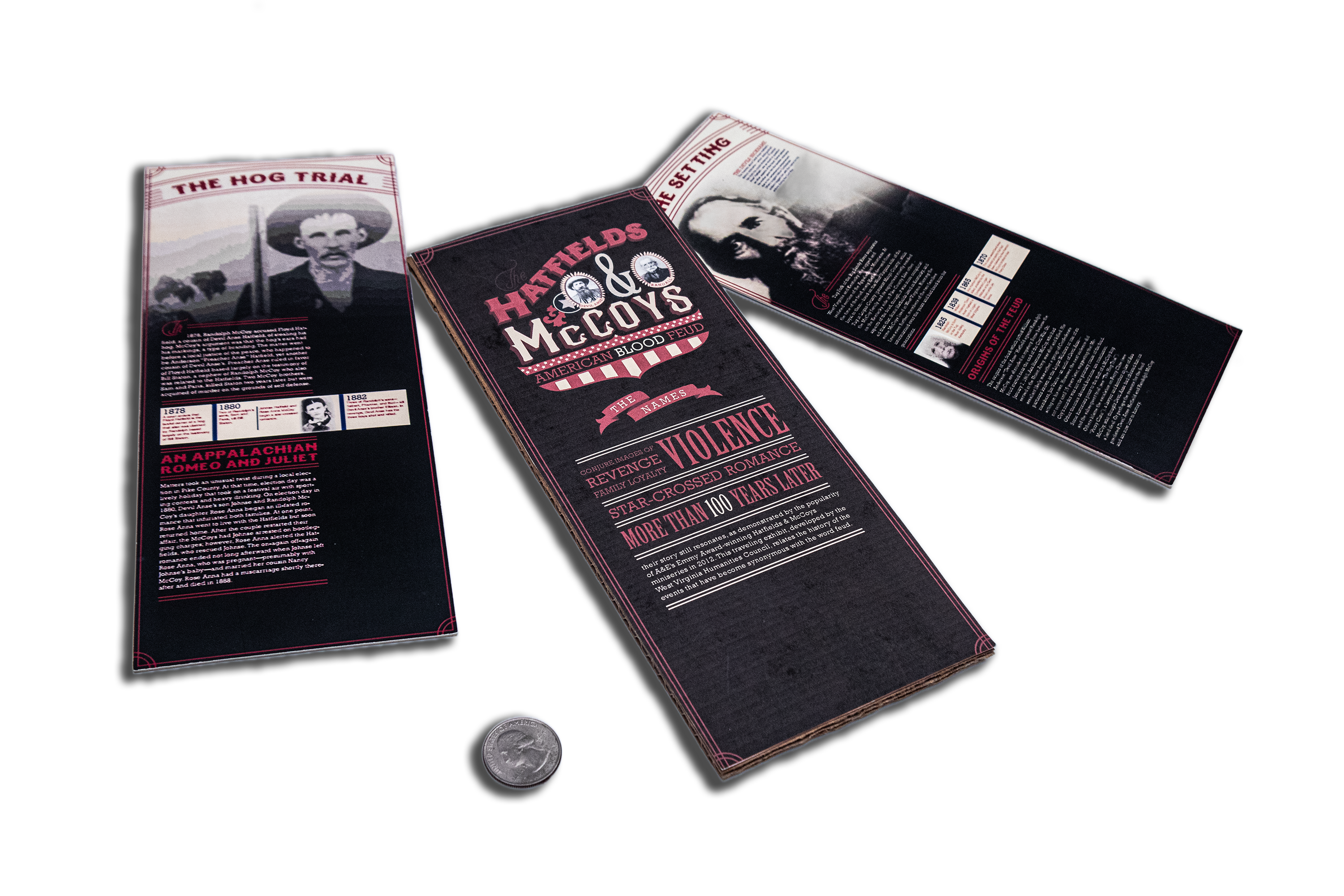
Early scale mockups of the Hatfield-McCoy exhibit are pasted on cardboard (quarter shown for scale).
-
2016
Council becomes the home of the West Virginia State Folklorist, inaugurating the WV Folklife Program with funds from the National Endowment for the Arts.
-
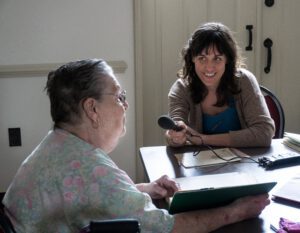 State Folklorist Emily Hilliard interviews songwriter Shirley Campbell in the Carriage House.
State Folklorist Emily Hilliard interviews songwriter Shirley Campbell in the Carriage House.
-
August 2017
The WV Folklife Apprenticeship Program begins, pairing masters of living traditions with dedicated apprentices for several months of training.
Below, fiddle repair master Chris Haddox demonstrates to an audience during the apprenticeship showcase in the Frank and Jane Gabor West Virginia Folklife Center, Fairmont State University, in September 2023.
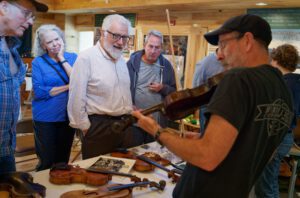
-
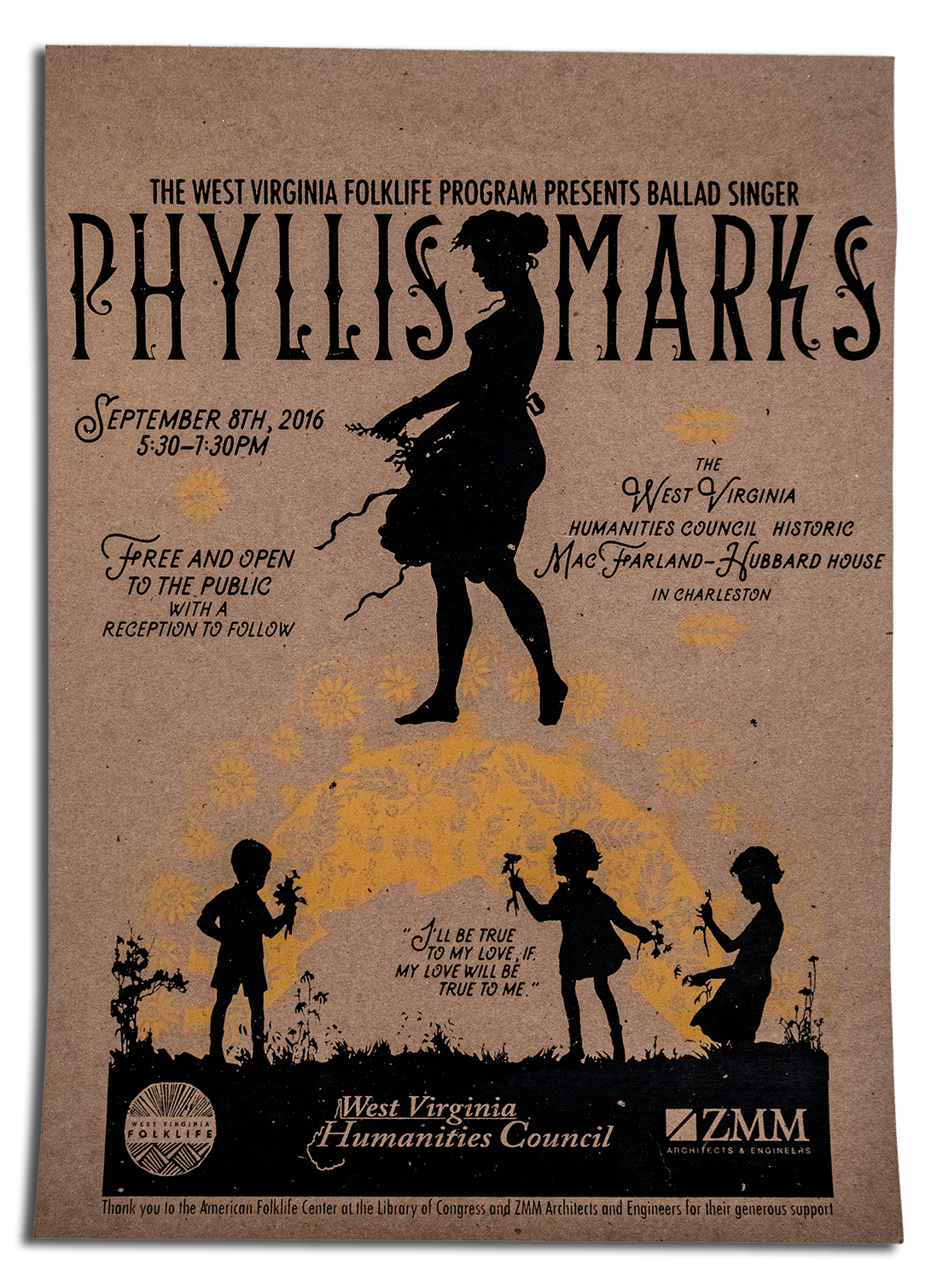
The WV Folklife Program collaborated with legendary Gilmer County ballad singer Phyllis Marks in 2016. Marks passed away in 2019.
-
September 27, 2018
Ken Sullivan retires.
Eric Waggoner, long-time literature professor at West Virginia Wesleyan College, becomes the new executive director.
-
2019
Our longest-serving program officer, Mark Payne (2003-2019), passes away after battling cancer. Mark brought many of the Council’s foundational programs to life during his tenure, and made the position what it is today.
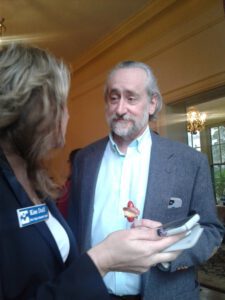
-
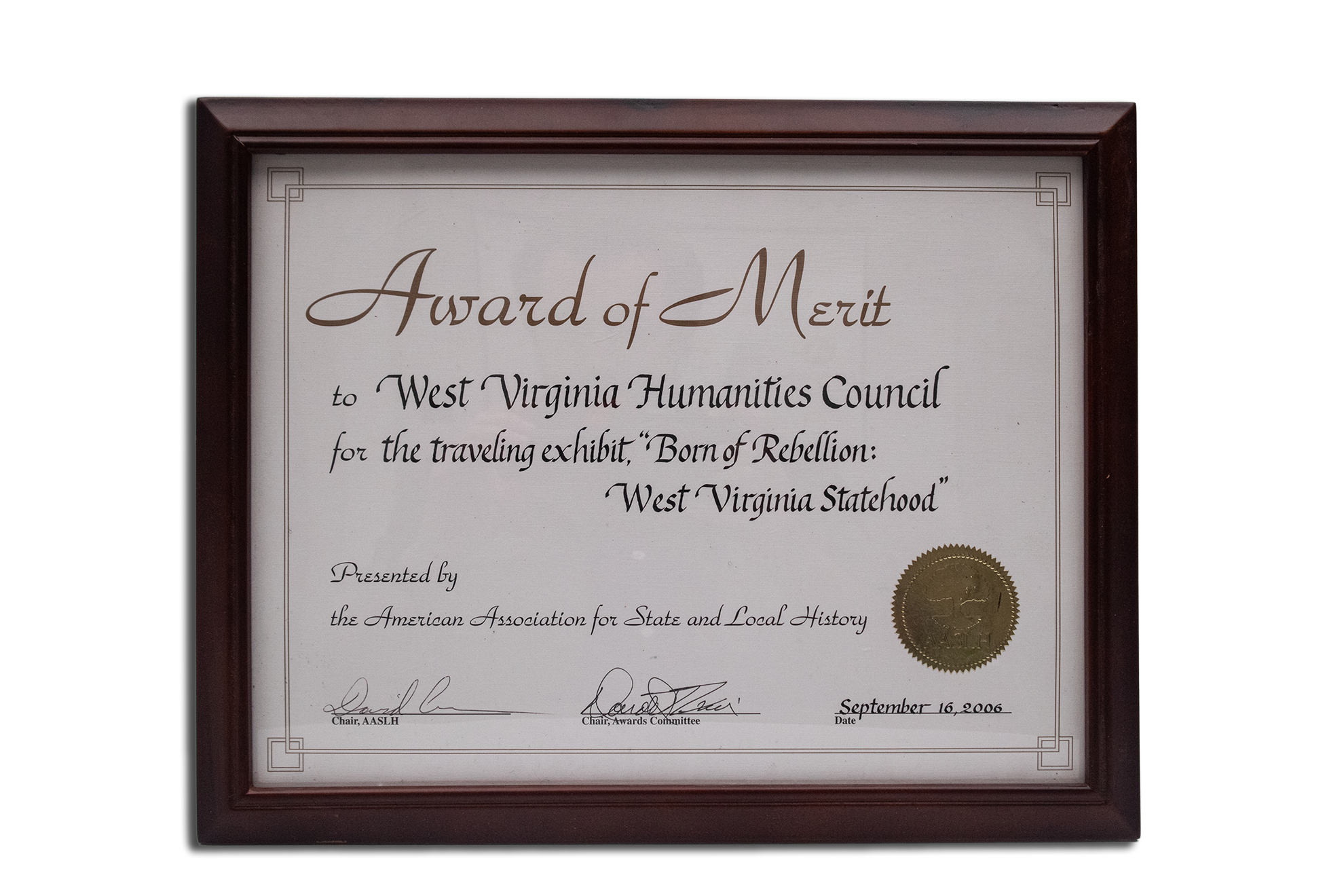
One of Mark Payne's proudest achievements was winning the American Association for State and Local History's Award of Merit for the Born of Rebellion traveling exhibit.
-
2020
The Council responds to the COVID-19 pandemic with new virtual programming, including the Mysterious Mountains podcast and the filming of events for online premieres, such as the Little Lectures series.
-
 John Morris plays with Jen Iskow at the MacFarland-Hubbard House in 2019, as part of their WV Folklife program apprenticeship showcase.
John Morris plays with Jen Iskow at the MacFarland-Hubbard House in 2019, as part of their WV Folklife program apprenticeship showcase.
-
2020
West Virginia fiddler John Morris, nominated by the Council, is awarded a National Endowment for the Arts National Heritage Fellowship.
-
2021
Smithsonian’s Crossroads: Change in Rural America exhibit begins its statewide tour.
Below, a crew of volunteers from host venues around the state pose after setting up the exhibit at Moorefield High School, Hardy County, in August 2021.
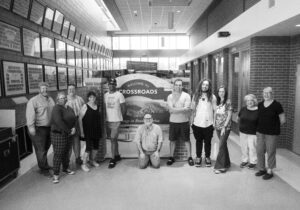
-
2021
The Council is awarded a U.S. Department of Veterans Affairs grant to begin the West Virginia National Cemeteries Project, which remains an ongoing work to the present day.
-
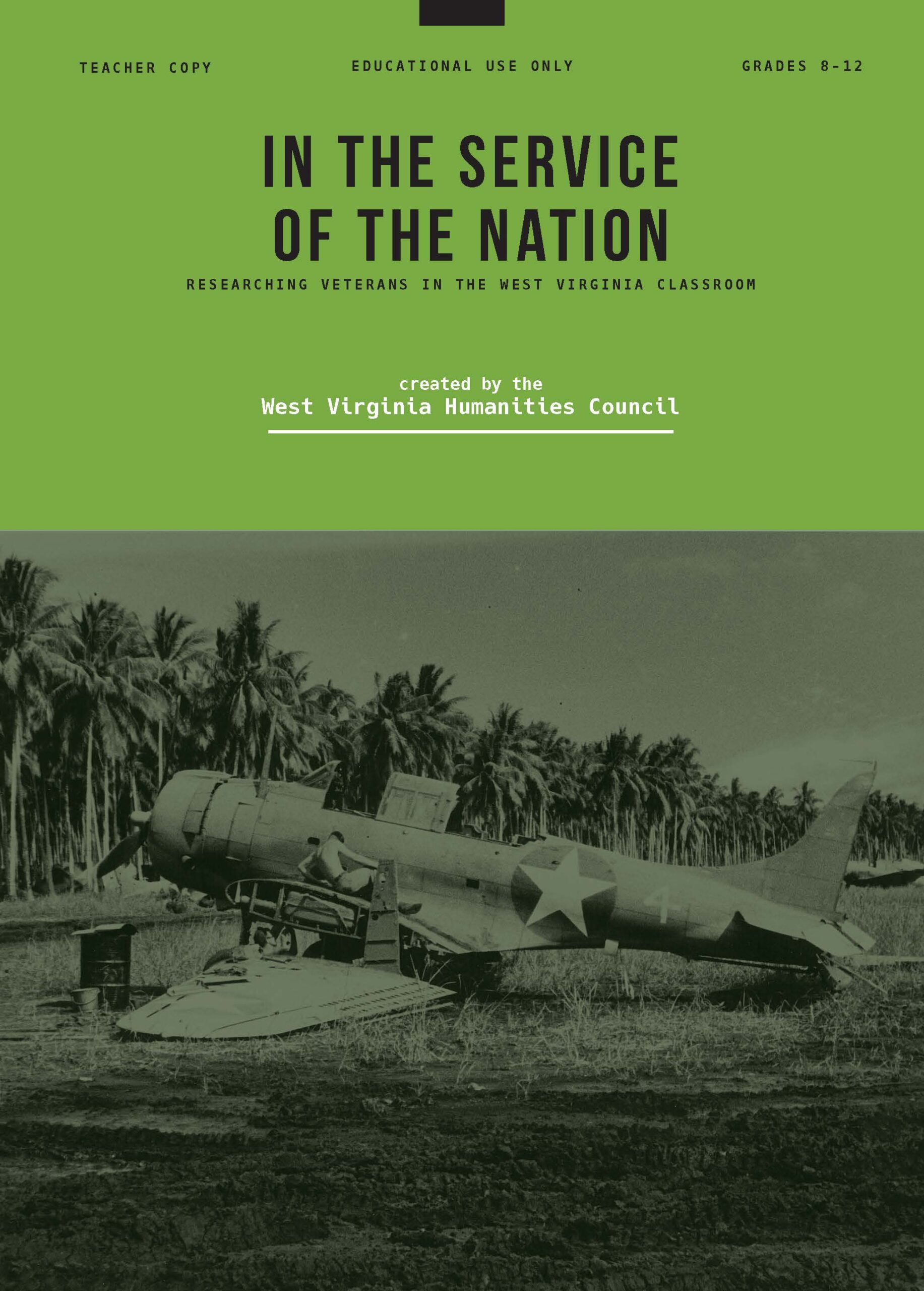
The Council released this set of classroom activities for grades 8-12 through its WV National Cemeteries Project in 2023.
-
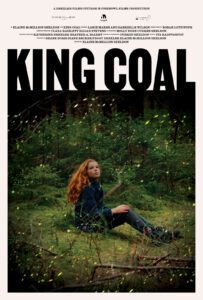 Elaine McMillion Sheldon's Council-funded documentary, King Coal.
Elaine McMillion Sheldon's Council-funded documentary, King Coal.
-
2022
The McCreight Lecture returns after a 2-year pandemic hiatus, featuring authors and journalists James and Deborah Fallows (below).
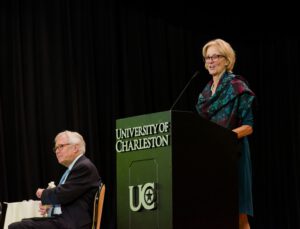
-
2023
Oscar-nominated West Virginia filmmaker Elaine McMillion Sheldon’s documentary, King Coal, premieres with a screening at the Culture Center in Charleston.
King Coal was partially funded by a Council grant, as was one of Sheldon’s previous documentaries, Hollow (2013).
-
2024
Help us make history with our 50th anniversary! We’ve been proud to serve West Virginia for half a century of bridging tradition and tomorrow.

